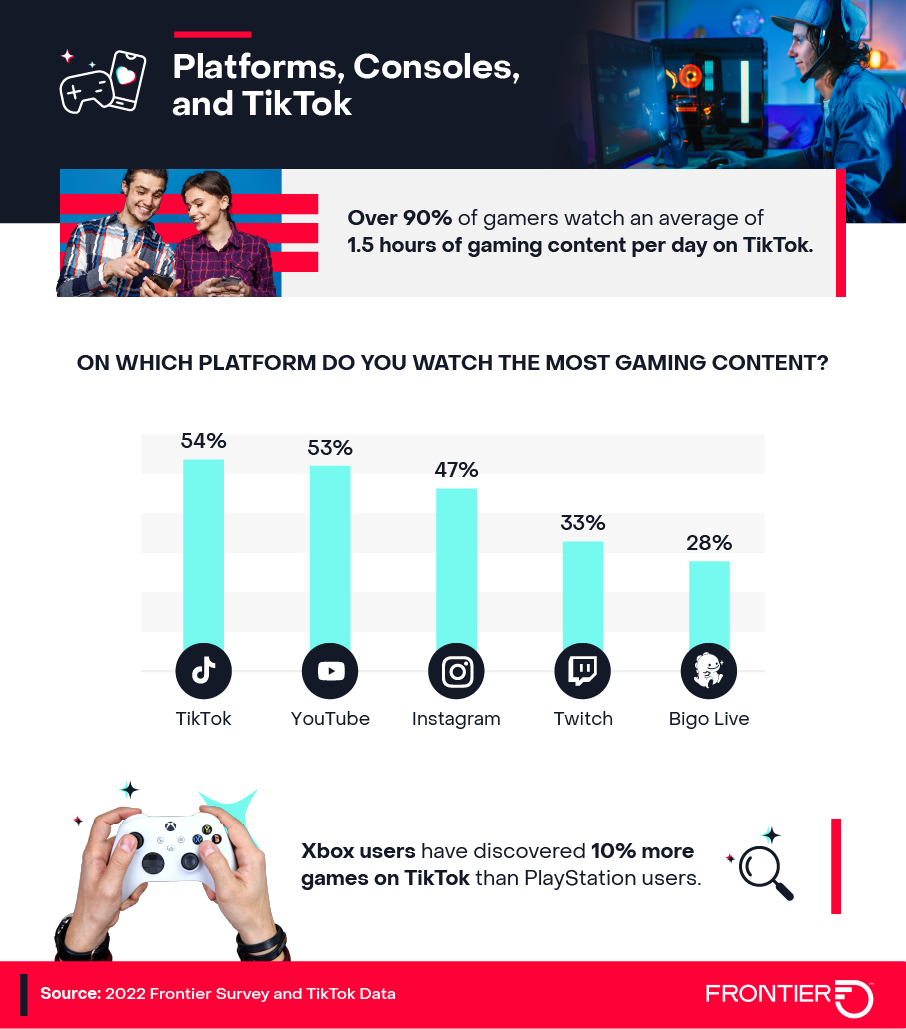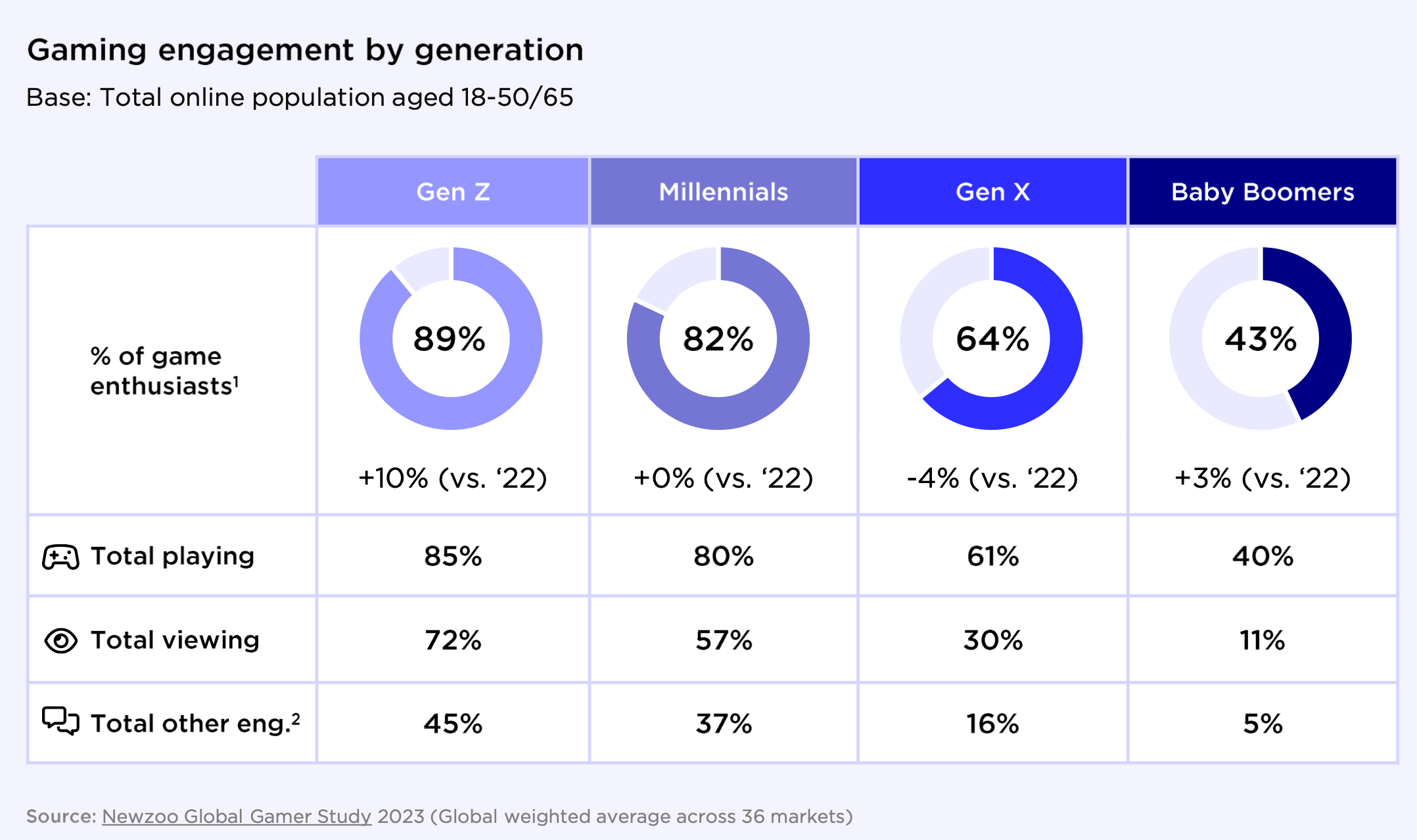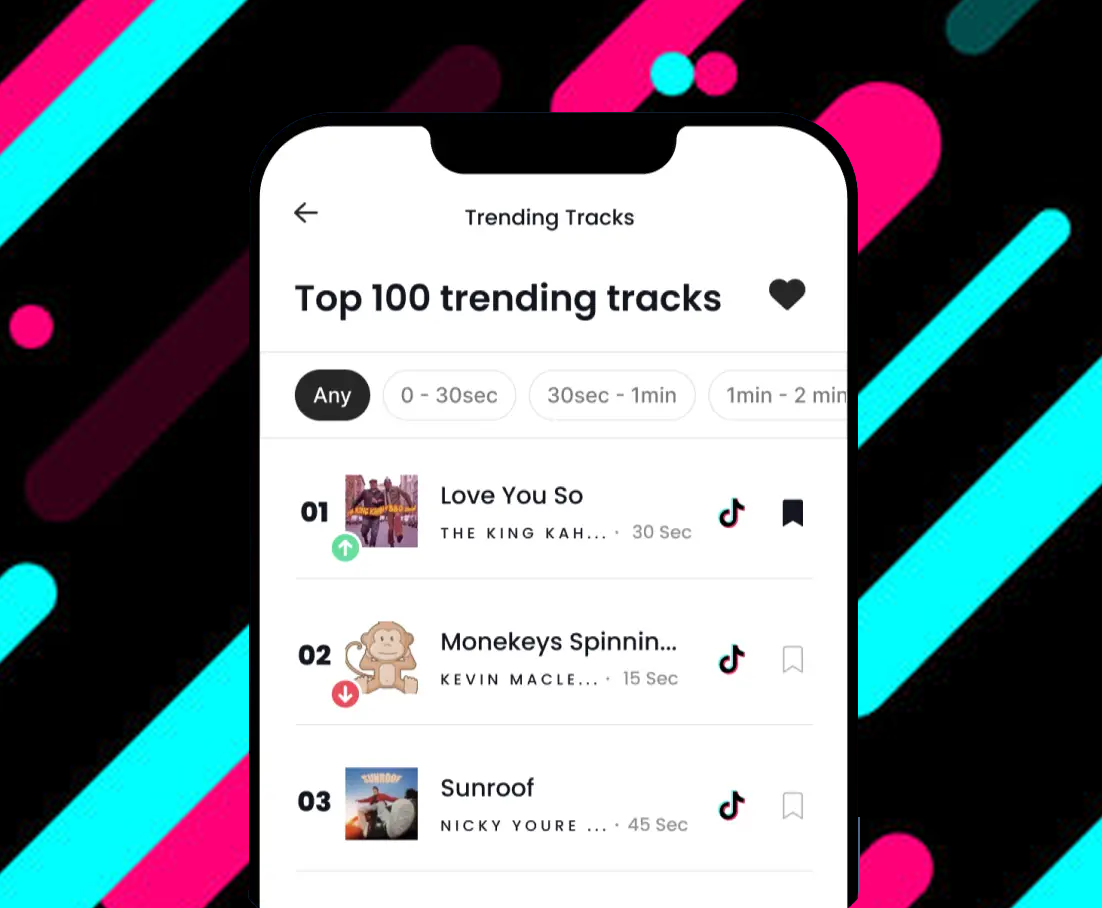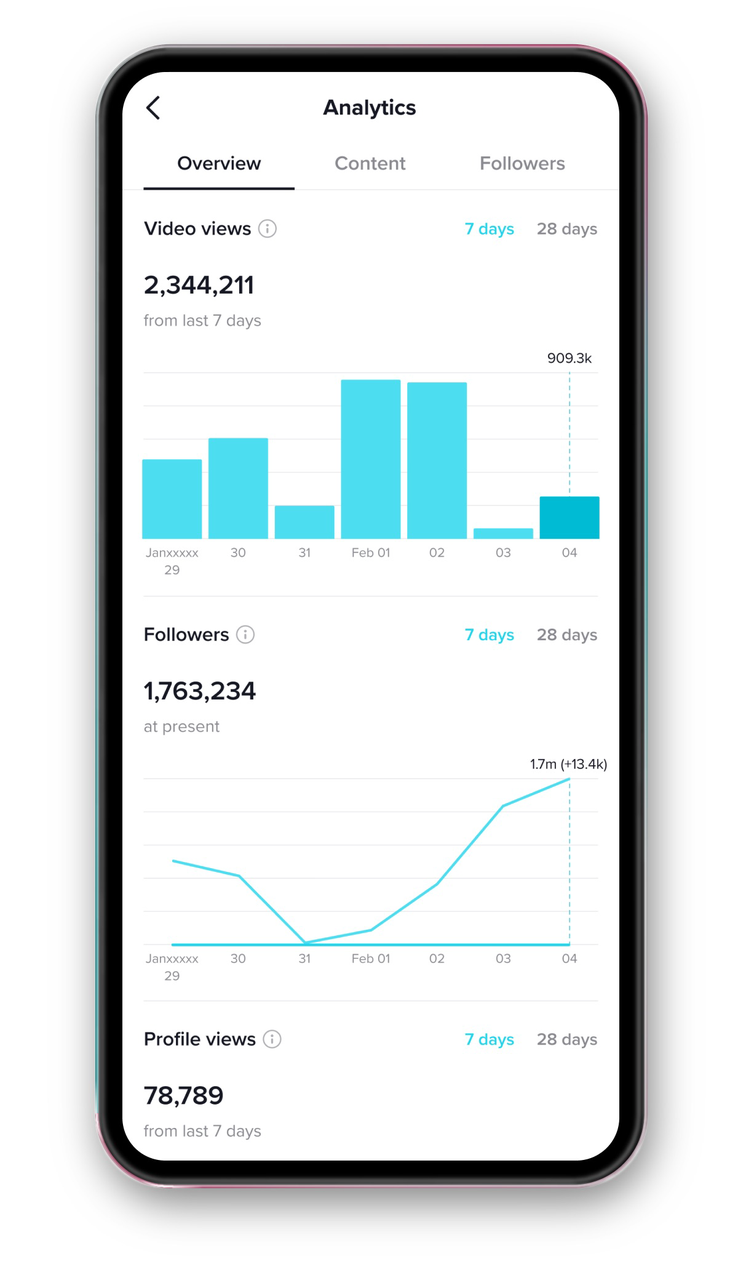Your Ultimate Guide to Game Marketing Success
You created a game and have painstakingly crafted every pixel, sound, and line of code. Now, it’s time to release it to the world, but you have one last challenge to face, one you have pushed to the last minute to focus on your creative craft: Promotion.
How do you market your game successfully to ensure it isn’t lost in the sea of new releases? How do you transform your hidden gem into a breakout hit?
Welcome to the world of video game marketing, where, without a well-thought-out strategic plan, even the most inventive titles may find it difficult to attract players. For indie developers, the stakes can be even higher, and the ocean appears ever so larger.
It can feel difficult, if not impossible, to promote your game when you have a restricted budget and limited resources. Yet, it’s a critical step—without the correct promotion, your masterpiece might remain undiscovered. And it would be a shame not to show the world all the sweat and blood you have poured into your project.
This guide is your lighthouse in the overwhelming waters of game promotion, crafted with indie studios in mind. From competing with big studios to working with tight budgets and standing out in a crowded market, we understand the challenges indie studios face.
Our goal is to equip you with the knowledge and tools you require to successfully navigate these challenges and promote your game to reach the widest audience possible.
Why Promote Your Game?
Promoting your game might feel like an afterthought or something you dread. You may think you lack the time, don’t want to manage public perception of your game or simply view it as selling out. However, this couldn’t be further from the truth.
As creatives and artists, your work deserves to be seen and enjoyed. Game marketing is there to help you showcase your passion projects and what we consider to be art pieces. We want you to spread your message to the masses, be able to profit greatly, and prove this won’t be a one-off endeavour!
Effective game promotion goes beyond a series of marketing tactics; it’s about creating a story that resonates with your players, building a community around your game, and making a lasting impact in the industry.
It involves understanding your audience, what they like and don’t like, using the proper channels at the correct times, and continuously monitoring and adjusting your strategies to perfect them.
I. How to Craft a Brand Your Audience Resonates With?
Think of your game as a diamond in an ocean of bright gems. It may be exquisitely crafted, unique, and full of potential. Still, without a compelling brand identity, it will remain another sparkling object among thousands of others, waiting to be finally discovered by a daring adventurer (aka potential players 😉).
The key to transforming your game from an unnoticed treasure to a celebrated masterpiece is first defining a solid brand identity. To set you apart, create a lasting impression on your players, making sure your game remains unforgettable and turns them into loyal fans. And a loyal fanbase is the hottest commodity available, no matter what you sell!
1. Importance of a Strong Brand Identity
A strong brand identity will make or break your game. You need to leave a memorable impression on whoever plays your game to increase the likelihood that people will recognize your studio and work repeatedly. Your brand identity is your guiding light, leading your players toward your shore (aka storefronts) amidst the turbulent waters of the competition.
It needs to encapsulate your game’s vision, goal, and values, clearly convey to your players what your game is all about, and the kind of experience they can expect. A well-crafted brand identity will create a strong sense of loyalty from your fanbase over time.

Supergiant Games, the studio behind Bastion, Transistor, and Hades, has a distinct art style and narrative approach consistent across all their games. This cohesive identity helps players instantly recognize their work.
Steps to define your game’s brand identity
Vision: To find your vision – ask yourself, what is your game’s ultimate purpose or long-term objective? You must define your goals and the effects you hope your game will have on players. For example, your vision could transform the puzzle genre by providing gamers with emotionally charged, narrative-driven challenges.
Mission: Then, figure out your game’s primary objective. You need to describe what your game does and who it serves. Your goal may be to design captivating and inventive gameplay experiences that satisfy the needs of puzzle fans who are drawn to challenging ideas and rewarding gameplay mechanics.
Values: Finally, decide what principles guide your game’s development. Identify the core values that shape your game and resonate with your audience. These could mean many things, such as creativity, integrity, player-centric design, or community engagement.
Death Stranding’s Brand Identity
Let’s take Death Stranding as an example. After all, why not? We aim to demonstrate that anything is possible, even for games that defy traditional categorization.
Death Stranding is often classified as a “genre-defying” or “strand game,” a term invented by the game’s creator, Hideo Kojima. However, it primarily blends elements of action-adventure, open-world exploration, and social simulation genres.

The game focuses heavily on exploration and delivery missions to maintain a connection between isolated communities, emphasizing narrative and emotional depth. Its unique gameplay mechanics, which involve balancing cargo, traversing rugged terrain, fighting eldritchian horrors, and building connections with other players without ever seeing them, set it apart from traditional genre definitions.
Many have compared the game to a walking delivery simulator with horror and survival elements, but when you dig deeper, you find that it challenges conventional boundaries, offering a unique experience that cannot be easily confined—or explained—to a single genre or style.
Application of Death Stranding’s brand identity
- Vision: Death Stranding wants to redefine the boundaries of storytelling and gameplay by creating a unique, emotionally resonant experience that explores the connections between life, death, and human relationships in a fractured world.
- Mission: Death Stranding wants to offer a groundbreaking, genre-defying experience that blends narrative depth with innovative gameplay mechanics, challenging players to reconnect a divided world and its individuals while confronting existential themes and the fragility of human connections.
- Values: Innovation, emotional depth, artistic vision, and player engagement are at the core of Death Stranding. The game introduces unique gameplay mechanics and narrative structures that challenge standard gaming norms, creating a story that resonates on a personal level while delving into profound issues such as life, death, and human connection. It provides a visually and philosophically compelling experience that pushes the frontiers of interactive entertainment, all while instilling a sense of community and interconnectedness in both the game and its players.
2. Crafting Your Editorial Line
Logically, your game’s logo and visual elements are the first things players notice and the first things you have crafted for your studio. A well-designed logo acts as a visual anchor for your brand.
It should be unique, easily recognizable, and reflective of your studio or game’s overall theme and style. For example, if you intend to create a dark-souls-like game where death is around every corner, create visual branding that conveys that sense.
For example, Nintendo’s logo, which is simple, clean, and red and white, is instantly recognizable. Nintendo’s logo now embodies the company’s legacy of innovation and family-friendly entertainment. The timeless design (which has been few to no redesigned over the years) reflects the company’s long history and commitment to quality.

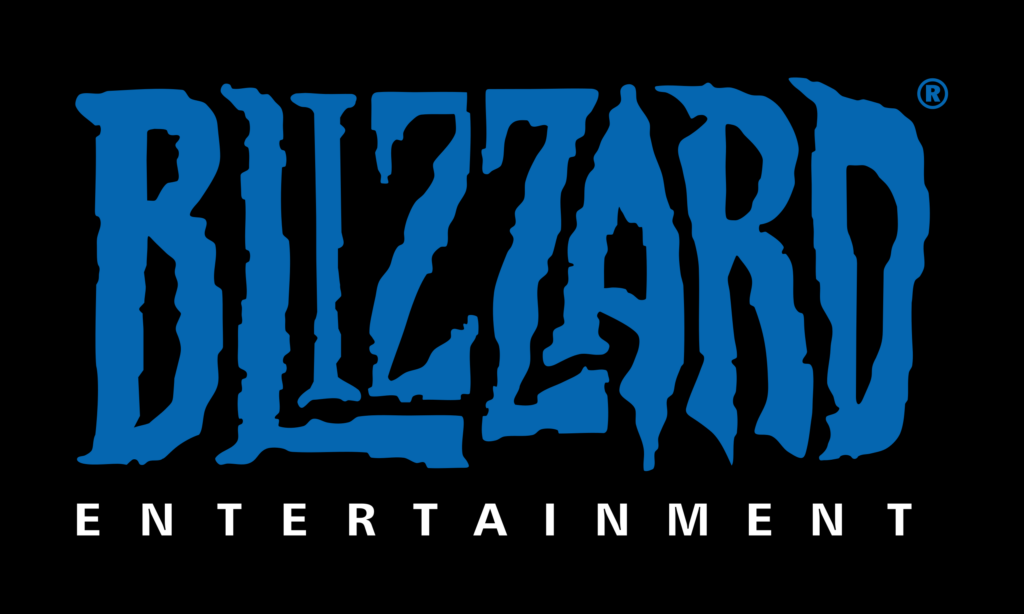
Alternatively, Blizzard’s logo features a bold, stylized font with a slightly futuristic twist, often presented with a glowing blue effect. The Blizzard logo conveys a sense of epic storytelling and high-quality production values. It’s synonymous with some of the most successful and beloved franchises in gaming, such as World of Warcraft and Overwatch.
3. Crafting a Consistent Brand Voice and Messaging
Additionally, it’s also important to develop a brand voice that reflects your game’s personality and appeals to your target audience. Whether your game is playful and whimsical or dark and mysterious, your brand voice should be consistent across all communications.
This includes social media posts and press releases, in-game dialogue and customer support interactions. Consistency in voice and messaging builds a cohesive brand experience that players will recognize and trust over time.
A perfect example is the popular Helldivers II, the Starship Trooper look-alike third-person shooter produced by Arrowhead. Their patriotic and propagandistic voice in their in-game dialogues, marketing strategy and promotion across all their socials and media has made them well known for their amazing use of powerful tone and voice branding.
Reinforced brand identity and player connection

Just take a look at their first game trailer, which immerses the player in the game’s universe before they even start playing. By tapping into the aesthetic and tone of the Starship Troopers film franchise (and lore) propaganda, they build a rich story and invite players to fully engage in the role-playing experience of a soldier enrolling in an intergalactic war.
This strategy has paid off, as evidenced by the enthusiastic social media feedback, especially on TikTok Players eagerly invited their followers to join the Helldivers to win the war collectively.
The gameplay mechanics further encouraged this, as real-time events like the conquest or loss of a planet or system depended on players’ active participation. This created momentum, attracting many followers from the start and maintaining engagement to date. However, beyond the massive budget, the correct branding and tone significantly contributed to the game’s achieving the popularity it enjoys today on social media.
II. Define your Market Through Research
You have got a brand, now you need your players! To truly understand your player base, you’ll need to go beyond the surface-level information gathering and conduct thorough market research. Start by identifying who your players are, what they enjoy, and why they are drawn to your game over the competition.
Analyzing this data provides valuable insights into their age, gender, location, interests, and gaming habits, as well as their motivations and pain points.
1. Understand the Market, Rule the Industry
We have seen that a thorough market analysis is essential for any game studio, but especially so before launching a game. Understanding the market landscape helps you make data-driven informed decisions, identify potential opportunities, and mitigate risks. This market analysis guides your development process and ensures your marketing strategies are well-aligned with industry trends and player preferences.
Market size and growth potential
Start by analyzing the overall market size and projected growth for your game genre. Look for data on player demographics, spending habits, and platform preferences to gain an understanding of your potential audience and how to best reach them.

Before launching Genshin Impact, Hoyoverse studio (anciently miHoYo) conducted extensive market research to understand the growing popularity of open-world RPGs and the potential of cross-platform play. This strategic knowledge helped them create a game that resonated with a global audience and achieved the massive success we know today.
Trends and emerging technologies
You also need to identify the current trends, such as popular game mechanics, art styles, and monetization strategies. Additionally, you need to remain aware of emerging technologies like VR, AR, and cloud gaming that could significantly impact your game’s development and market appeal.
The rise of mobile gaming influenced Supercell’s decision to develop Clash of Clans in 2012 and Clash Royale in 2016. In the same year, Clash of Clans peaked at $799.39 million in revenue, while Clash Royale earned $647.92 million. These successes were driven by in-app purchases amid the rising popularity of mobile games. By capitalizing on the real-time strategy trend and expanding the mobile market, they created a global hit.
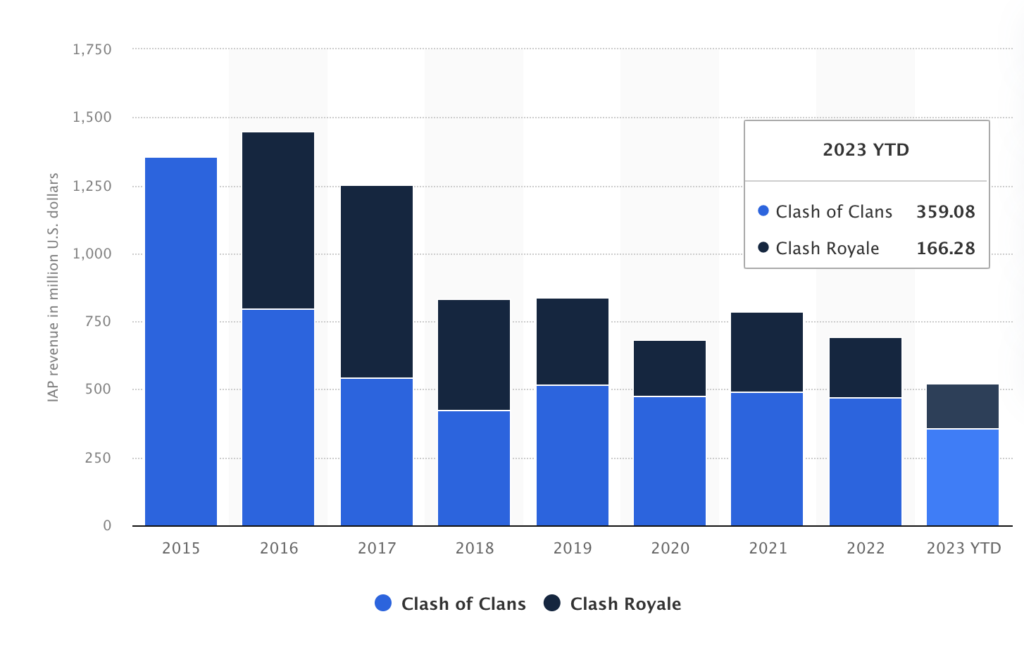
Regulatory and economic factors
Understanding the regulatory environment in different regions, including age ratings, content restrictions, and data privacy laws, is a must. Additionally, consider economic factors like currency fluctuations and purchasing power in your target markets to ensure your game’s accessibility and long-term profitability.
Aware of China’s strict content laws, Blizzard Entertainment adapted World of Warcraft to the country’s specifications, guaranteeing the game’s successful launch and expansion.
Specific changes were made to conform to China’s stringent regulations, especially regarding the representation of blood and skeletons.
For instance, skeletons were modified to resemble mummies, with exposed bones covered in flesh. These changes were facilitated through Blizzard’s partnership with NetEase, a Chinese company well-versed in local regulations, which played a crucial role in navigating the complex regulatory landscape.
The most recent esports guides suggest that there are approximately 129 million active World of Warcraft players. Up to 1.2 million gamers were reportedly logging in daily in January 2023 to take advantage of all that World of Warcraft has to offer.
Adapting to market changes
Trends and player preferences are constantly evolving, and unfortunately, you’ll have to adapt quickly to any disruptive change coming your way. Regular market overviews can help you stay ahead of these changes and adapt your game preventively.
Early in the 2010s, Ubisoft noticed that open-world games were becoming increasingly popular. This was especially true after The Elder Scrolls V: Skyrim, which debuted in 2011 and sold over 30 million copies by 2016. Ubisoft changed its strategy in response to this trend, which helped make successful games like Assassin’s Creed—which rose to prominence as a standard for open-world gaming.

According to Ubisoft’s financial statistics, the open-world gaming genre is predicted to continue growing and represents a substantial percentage of the gaming business, valued at approximately 27,6 billion. The steady success of Ubisoft’s open-world games can be attributed to this strategic concentration, which allowed the company to take a sizable chunk of this industry.
2. Importance of Monitoring the Competition
The second step of your market research is to define your competition. Keeping a vigilant eye on your competition is not just advantageous; it’s essential.
Understanding your competitors helps you spot market gaps, learn from their wins and losses, and refine your strategy. A competitive analysis keeps you ahead of trends, sparks innovation, and leads to smarter decisions that drive your game’s success.
Identify gaps and opportunities
Analyzing your competitors helps you discover unmet market needs. For instance, if you notice that most games in your genre lack robust multiplayer features, you can focus on developing a superior multiplayer experience to attract players.
Consider the indie game Slay the Spire, which was developed by Mega Crit in 2019. By identifying a gap in the market for a deck-building roguelike game, the developers created a unique game that stood out from competitors, leading to widespread acclaim and commercial success.
Through careful market analysis, they discovered that while there were numerous deck-building games and roguelike games, very few combined both genres, especially with a cooperative mode. This insight allowed them to target a specific niche of players who were looking for this unique blend of gameplay.

Learn from other’s mistakes
Understanding why certain games failed or succeeded provides valuable lessons. By studying user reviews and feedback on competitors’ games, you can avoid common pitfalls and enhance your game’s features and release timing. The developers of No Man’s Sky experienced significant backlash at launch due to unmet player expectations and a perceived massive lack of content.
The game overpromised during its campaigns and couldn’t deliver, much to fans’ deception. Players were promised a vast, richly detailed universe filled with diverse experiences, but many felt the game was empty and too heavily focused on resource gathering, which made the gameplay quickly repetitive and boring.

From Flop to Top
This initial disappointment was reflected in user reviews, widespread criticism and bad ratings across gaming communities. Instead of abandoning the project, the developers at Hello Games used this feedback constructively. They listened to player complaints and identified the key areas that needed improvement, such as adding multiplayer functionality (a highly requested feature), enriching the game’s content, and fixing bugs.
Over time, they released a series of substantial updates and patches, each addressing specific player concerns and adding new features that significantly improved the gameplay experience. In the end, Hello Games made the choice to actively engage with their community and acknowledge the game’s shortcomings.
They made regular updates based on the players’ feedback and, over time, attracted new players, who had been initially skeptical and dismissive. Gradually, this continuous improvement transformed the game’s reputation leading to a resurgence in popularity.
How to conduct the competitive analysis of your game
Identify key competitors
Start by researching games similar to yours in terms of genre, style, and target audience. Focus on both direct competitors, which are games with similar mechanics, and indirect competitors, which are games that attract the same audience but may differ in gameplay or genre.
Let’s take the rightfully popular Baldur’s Gate 3 as an example. We would consider its direct competitors to be Divinity: Original Sin 2 and Pillars of Eternity II: Deadfire. Both games feature a rich, story-driven RPG experience with deep tactical combat intricate storytelling and a focus on player choice.
Its indirect competitors are games like The Witcher 3: Wild Hunt and Skyrim (The Elder Scrolls V), as while they attract the same audience, they offer a different gameplay experience. For instance they both are open-world RPGs that appeal to players who enjoy deep narrative and exploration freedom, but they are not Turn-based gameplay mechanics like Baldur’s Gate is.
Analyze competitor games
Study the details of your competitors’ games by analyzing their gameplay mechanics, graphics, storylines, and user interfaces. Pay close attention to user reviews and feedback to understand what players appreciate and what they find lacking in these games. These insights will help you identify areas where you can bring something different or better to the table.
Examine marketing strategies
Observe how your competitors promote their games across various channels. Analyze their social media presence, influencer collaborations, and advertising campaigns. Understanding their marketing strategies will help you identify effective tactics and potential gaps that you can exploit to better reach your audience.
Track performance metrics
Monitor key performance metrics such as sales figures, download numbers, and player engagement levels.
This information will help you benchmark your game’s performance and identify opportunities for improvement. Competitor analysis can feel like a painstaking process, but it is necessary to position your game correctly.

3. Understanding Your Target Audience
We define a target audience as a specific group of people identified as the intended recipients of a particular message, product, or service (basically your players). A target audience is defined by characteristics such as demographics, psychographics, and geographic location. Understanding and defining these groups helps businesses tailor their marketing efforts to resonate with those most likely to be interested.
To determine your game’s target audience, start by analyzing your current customer base to identify common traits like age, gender, interests, and purchasing behaviour. You can then conduct market research through surveys, interviews, and focus groups to gain deeper insights into potential customers’ preferences. Another trick is to study competitors’ audiences and use analytics tools to track website and social media engagement.
Player persona Vs. Target audience
Once you understand your audience’s preferences and dislikes, you will be able to create detailed player personas. These personas are fictional yet realistic profiles of your ideal players.
Their description includes demographic details like age, gender, location, and occupation. It also covers psychographics, such as interests, favorite genres, values, and lifestyles. Gaming behaviors are included too—platform preferences, gaming frequency, game types, and spending habits.
Once your persona is created, it should explain why each player plays and their in-game goals for each profile.
Build your player’s personas
Let’s take as an example, “Strategic Sam,” a 25-year-old who enjoys strategy games and spends an hour each evening playing online with friends. Perfect! You have a strategy game that allows for a multiplayer experience. Strategic Sam is the perfect player persona and the audience you should target.

Defining the right audience for your game and creating personas that reflect your players is an extensive task. It is a long, painstaking process that requires a significant investment of time, skills, and resources.
It demands extensive data and a strong understanding of trends. You might lack the resources or knowledge to gather this data, and pulling it all together already feels daunting.

Want to learn more? Check out our latest articles for an in-depth guide on how to define your game’s target audience with user personas.
III. Building a Winning Marketing Strategy
Game Marketing is more than just trying to create a buzz; it’s about building a cohesive plan that resonates with your target audience by leveraging multiple channels and ensuring your game gets the maximum visibility possible to attract players!
Of course, the end goal is to drive sales and share the art you have been working on. You have already studied your competition, analyzed your market, and defined your audience; now, you need to catch their attention.
1. The Power of Storytelling
Storytelling is an effective tool for building a loyal fanbase, but it is often underestimated. We like to preach the mindset of “everything can be content”; this approach involves packaging every step of the way into something valuable for those who follow you.
You have to share the story behind your game creation, highlight parts of your development process, talk about the challenges you have overcome, and present your team and their work; anything to humanize the making process. If, for you, your game is more than just a product, this is the perfect approach to showcase that to your audience and build an emotional connection over time.
Leveraging storytelling to build a loyal fanbase
Stardew Valley, developed by ConcernedApe (also known as Eric Barone), is an exemplary case of leveraging storytelling to build a loyal fanbase. ConcernedApe consistently shared his development journey on social media and forums, providing fans with a behind-the-scenes look at the challenges and triumphs he faced. He posted regular updates, including screenshots, gameplay features, and personal reflections, highlighting his dedication and passion.
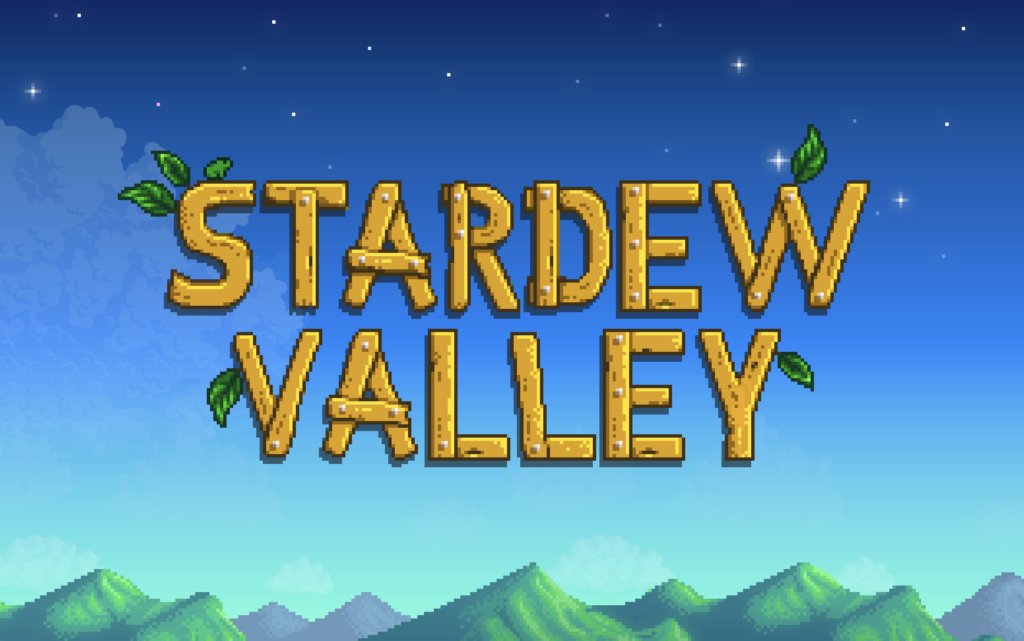
ConcernedApe actively engaged with his community, responding to feedback, answering questions, and incorporating player suggestions, which strengthened the bond between him and his players over the years.
You’re the best story
As a result, fans became emotionally invested in both the game and Concerned Ape’s success.
Upon release, Stardew Valley received overwhelming support, driven by a loyal, almost cult-like fanbase that was cultivated quickly thanks to its creator and the transparent and authentic storytelling approach of its creator.

Even after the game’s release, ConcernedApe continued to share updates and expansions, maintaining a strong connection with his audience and keeping them engaged and invested in the game’s future.
Every game tells a unique story, but the development process tells another tale. It’s one of passion, creativity, and dedication. By sharing this transparent journey with fans, you let them connect with you. They become personally invested in your game’s success. The bottom line: they will care if your game succeeds or fails.
2. Positioning Your Game in the Market
As we have seen, to position your game correctly in the market, you need to clearly define where you stand in relation to your competitors and how to appeal to your target audience. After that, you need to understand and define what makes you different from everything else that’s already out there.
Basically, define what makes your game unique! It can be a distinct art style, innovative gameplay mechanics, or a compelling story. Then, you’ll have to market the unique features your game possesses to ensure interest and attract the right player.
Niche Market Opportunities
Targeting niche markets can be a highly effective strategy for all studios, in special indies. By focusing on specific player segments, you can create highly tailored experiences that resonate deeply with your audience. Niche marketing allows you to stand out in a crowded market and build a loyal community around your game.
Targeting a niche market offers several significant benefits for game developers. First, niche markets typically compete less than mainstream genres, making it easier for your game to stand out and capture attention. Additionally, players in these markets are often highly passionate about their specific interests, leading to a loyal player base that is more likely to become dedicated fans and advocates for your game.
Furthermore, niche markets tend to have tight-knit, engaged communities, which can drive strong word-of-mouth marketing and organic growth. Finally, by focusing on a niche, your game can develop a unique identity that sets it apart from the mainstream, helping it gain recognition and establish a strong brand.
Finding your niche
You know your competition and your audience. Now, it’s time to carve out your niche.
Determine underrepresented player segments with particular needs or interests, and think about using distinctive themes, gameplay elements, or visual aesthetics to set your game apart.
Your greatest quality is your uniqueness. You can identify gaps in the market by performing competition and market analysis. Your game has the best chance of succeeding if you focus on these specialized niches and provide something unique.
Undertale by Toby Fox targeted a niche market of players who enjoy unconventional RPGs with unique combat mechanics and a strong focus on player choice and narrative. This approach allowed the game to become a cultural phenomenon with a dedicated fanbase thanks in part to its innovative gameplay and memorable story.
Global Market Size
Imagine your potential market as a funnel that starts wide and narrows down to a specific segment. At the widest point of this funnel, you have the global gaming market, which includes approximately 3.32 billion players with diverse preferences and styles.
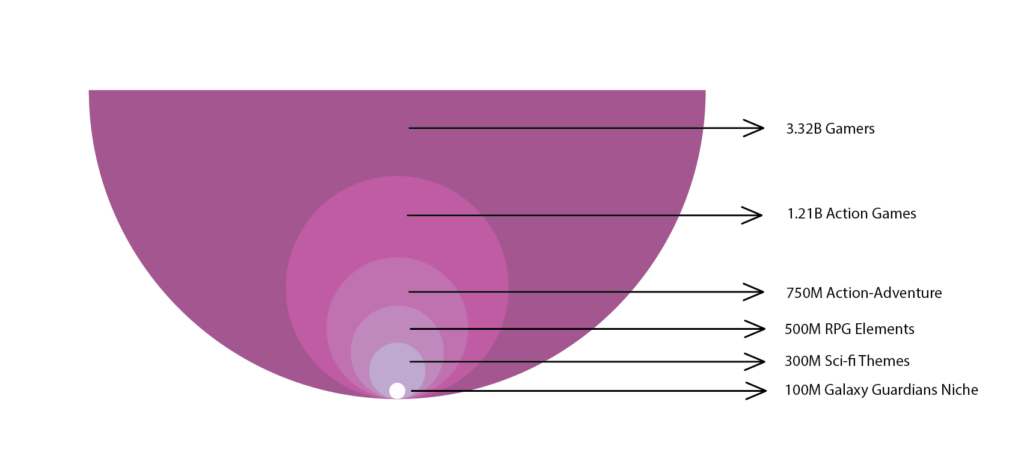
Concentrate on a particular genre within this large market, such as action games, which draw approximately 1.21 billion players globally. This genre, which includes anything from platformers to first-person shooters, is well-liked because of its thrilling gameplay, competitive spirit, and fast-paced style.

As you continue to narrow the funnel, your analysis will guide your focus on a niche that allows you to better tailor your products to the unique demands and interests of the market.
This strategic approach not only differentiates your product in a crowded marketplace but also helps forge closer connections with the players you aim to attract, ensuring a more impactful and successful launch.
3. Defining your game’s unique selling points
Unique Selling Points (USP) are any features you can use to differentiate your game from the crowd. A well-defined USP not only highlights what makes your game special but also clearly communicates to potential players why they should choose your game over others.
The key is to identify the aspects of your game that offer something players can’t easily find elsewhere, ultimately creating a clear and compelling reason why your game stands out.
When you effectively communicate what makes your game unique, you establish a distinct identity that resonates with your target audience, especially in crowded genres where similar experiences are common. This differentiation is what compels players to choose your game over others.

For example, Undertale, is an excellent case study of a game that effectively leverages its USP. The game introduced an innovative combat system that allowed players to engage in either violent or non-violent encounters depending on the path they choose, combined with deep, emotional storytelling and a rarely seen gameplay. This unique combination set Undertale apart from other RPGs and played a significant role in its success.
Players were drawn to the game because it offered a fresh experience that was both intellectually stimulating and emotionally impactful. By emphasizing these unique aspects in marketing messages, Toby Fox successfully positioned Undertale as a must-play game within the indie scene.
Crafting marketing messages around your USP
Once you’ve identified your USP, the next step is to craft your marketing messages around it. Every piece of promotional content, whether it’s a trailer, social media post, or press release, should emphasize what makes your game unique. Highlighting your USP consistently across all channels helps reinforce your game’s identity and keeps it top-of-mind for potential players.
For instance, if your game’s USP is its unique art style, your marketing should showcase this through visually striking trailers, screenshots, and promotional artwork. If your USP is a groundbreaking multiplayer feature, create content that demonstrates this in action, such as gameplay videos or player testimonials.
The goal is to ensure that your USP is the focal point of your marketing efforts, making it clear to players why your game offers something they can’t get anywhere else.
Examples of effective USPs in the gaming industry
Undertale is just one example of how a well-crafted USP can lead to success. Other games have also effectively used their USPs to carve out their niche.
- Cuphead is known for its distinctive 1930s cartoon-inspired art style and challenging gameplay. This unique combination immediately sets it apart from other platformers and is a major draw for players who appreciate its aesthetic and difficulty.
- Portal’s inventive combination of dark humour and physics-based puzzles created a unique experience for players. The game’s USP resides in its capacity to test players’ problem-solving abilities through the use of space and portals while presenting a complex story full of humour. The game stands out in the puzzle and first-person genres thanks to its unique blend.
- Firewatch by Campo Santo positions itself as a first-person adventure game with a strong emphasis on narrative and atmosphere. Its USP is the deeply personal and emotional story it tells, which is conveyed through natural dialogue and immersive environments, appealing to players who seek a more introspective gaming experience.
A strong USP is not just an advantage for games, it has became part of their DNA. By clearly defining what makes your game unique and effectively communicating that uniqueness through your marketing strategy, you can position your game in the market in a way that resonates with players and drives success. Your USP is the key to standing out in a crowded market and ensuring that players choose your game over the many others available.
4. Building Brand Awareness
For a strong brand awareness strategy, you need consistency. This means continuously reinforcing your brand message so your target audience becomes more familiar with it and inclined to trust you over time.
The goal is to get your gamers to recognize, remember and engage with your brand through repeated exposure, and to join your player base ultimately. It’s simple: The more people know and trust your brand, the more players you’ll attract!
Building brand awareness takes time and resources. It won’t happen overnight. You need to create a step-by-step process and a timeline aligned with your marketing strategy.
Furthermore, this includes planning for effective communication across various channels, including social media platforms, creating content marketing (such as blogs, behind-the-scenes videos, and guides), and press releases, and attending gaming events and trade shows.
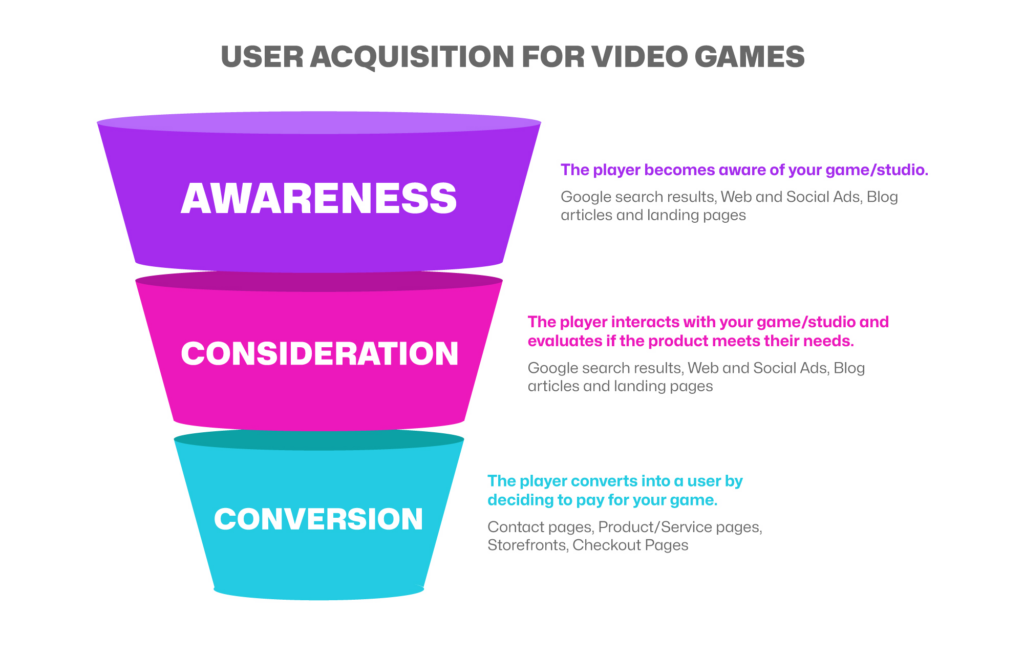
You need to leverage your social media to engage with your community and encourage feedback. Moreover this not only surveys the brand perception of your studio and game but also aids in your development process—creating a win-win situation! Additionally, advertising through ad campaigns and influencer collaborations is crucial to get the word out.
Your goal should always be to create multiple touchpoints where players can meet and interact with you and your brand. This multi-channel approach ensures that your brand remains visible and engaging, helping to build a loyal player base.
5. Defining Goals to Achieve Success
When planning your promotion strategy, establish clear, measurable goals to ensure your campaigns achieve the best outcomes. Setting specific goals also provides the highest return on investment.
Trying to achieve too many objectives at once can dilute your efforts. Like in a game with limited ability points, you need to carefully choose where to focus your resources and energy.
Define your campaign’s specs
By prioritizing and defining your goals—your campaign “spec”—you can strategically channel your efforts to areas that will have the greatest impact, ensuring your promotional strategy is both efficient and effective. You don’t want to spread too thin, our advice: Pick a couple of goals and stick to it!
- Increase brand awareness: The objective is to make more people aware of your game. To measure this, track metrics like impressions, reach, and social media mentions.
- Drive engagement: Encourage interaction with your content. Evaluate metrics such as likes, shares, comments, and click-through rates on social media and other platforms to measure engagement.
- Boost sales: Aim to increase the number of game purchases. Analyze sales data, conversion rates, and revenue generated from the campaign to measure success in this area.
- Build a community: Foster a loyal player base that actively participates and supports your game. Assess community growth through forum memberships, Discord server activity, and repeat engagement metrics.
- Improve customer retention: Keep existing players engaged and prevent churn. Track retention rates, repeat purchase rates, and in-game activity levels to measure retention success.
- Enhance brand perception: Shape how your brand is viewed by your audience. Conduct surveys to gauge brand sentiment, monitor reviews and ratings, and analyze changes in brand sentiment over time.
6. Key Promotional Strategies
Various marketing channels are available, each with unique strengths and weaknesses, depending on your promotional goals.
Your goals may include boosting game visibility, increasing engagement, promoting effectively, or building a loyal player community. Pick and choose wisely what fits your promotion goal best!
Content marketing
Content Marketing is all about delivering valuable, relevant, and meaningful content that addresses your audience’s needs, interests, or problems. Instead of pushing sales-driven messages, content marketing focuses on offering useful information, insights, or entertainment that genuinely benefits the audience. This is a great way to build trust, establish your brand as an authority, and encourage a stronger connection with your audience, ultimately leading to long-term engagement and loyalty.

Create content like tutorials, behind-the-scenes guides, and blog posts showcasing your game development process and challenges. Introduce your team and collaborators, share gameplay videos, and highlight development milestones. Host podcasts for discussions and interviews to engage your audience.
Aim to create high-value content
Anything you can think of can be content marketing as long as it provides additional value to your audience. (A good tip is to ask yourself: Would I be interested in watching/reading/listening to this content in my free time?”).
Content marketing attracts potential players and helps grow your audience with a strong conversion rate. It will also improve your retention by keeping your existing audience deeply engaged and invested in your game’s journey. By diversifying your content, you will reach different audience segments and provide a unique opportunity to connect with your fans and build anticipation for your game.
Content marketing offers other advantages, including improved SEO to boost organic traffic to your websites, socials and storefronts (ASO). However, it can quickly become resource-intensive and often has a slow return on investment (ROI), as it requires constant updates to remain effective.
Advertising marketing
To get the correct audience to notice your game, you need a strong advertising approach. Start by deciding which platforms—social media or search engines, for example—are the most pertinent, then customize your advertising for each.
With Pay-Per-Click (PPC) ads, you can target particular keywords and make sure users who are actively looking for related content see your game. In the meantime, display ads help increase brand exposure by using graphics to draw users’ attention across a variety of websites and apps.
Then monitor key performance indicators (KPIs) such as impressions, clicks, and conversions to optimize efficacy. By concentrating on the content that appeals to your audience the most and making necessary adjustments to your underperforming ads, you can use this data to improve the overall impact of your campaign.
Influencer marketing
Influencer marketing has become practically unavoidable, and for good reason! It’s an effective method that enables game makers to use the reach and reputation of established content providers to market their games to already highly engaged audiences.
Collaborating with influencers allows studios to tap into communities that trust and value these individuals’ opinions. Influencers create authentic content, like gameplay reviews, live streams, and tutorials, that resonates with their audience. This increases engagement on their platforms, creating a ripple effect whenever they collaborate with brands.
This strategy increases visibility and credibility since gamers are more likely to test a game recommended by someone they follow. Influencer marketing is particularly effective at reaching niche groups and creating word-of-mouth buzz, increasing conversion rates and long-term player retention.
Social media marketing
Working with influencers also means working with social media. Don’t panic. It’s way easier than it seems and can even be fun. You just need some preparation and a good schedule.
But, first and foremost: You need to find out where your target audience spends their time online. Knowing this can make or break your promotion strategy. You need to choose the platform where most of your audience is located and the most active. It could be social media giants like Facebook, Instagram, TikTok or X, gaming-specific platforms such as Twitch, Discord or YouTube, forums such as Reddit, and so on.
Select the right platform
We recently published a piece on how Palworld used social media and communication channels to propel its rapid ascent. Pocketpair Studio effectively engages players because they are treated as members of the team, and sincere connections are made via forums, Twitter, and Discord.

As a result of this strategy, Palworld’s Discord community grew to 335,238 members. Its Twitter following increased by 1,549.9% to 407,000 followers. Through open-beta participation and real-time feedback, the studio built a close-knit, trustworthy community. This community enhances the game and strengthens lasting bonds with players.
By strategically selecting your platforms, you won’t waste your time and energy on things that won’t provide a return on your personal investment, and you will maximize the reach and impact of your campaigns. Once your platform of choice has been selected, you can focus on running your campaigns.
Maximize your presence
Social media is your gateway to reach a vast audience, and also the easiest channel to get into. Anyone can create a social media account, but not everyone knows how to use its potential to the fullest. You are here to maximize its potential to get more players and to do so, you need to:
- Post regularly to keep your game in the feed. Remember: consistency is key to keeping your project in the mind of your audience.
- Engage actively with your followers and respond to comments and messages to build a loyal and responsive community.
- Remember what we said about content marketing? You can also use the content here! Use a mix of content types such as images, videos, stories, and live streams, to showcase different aspects of your game. This includes the behind-the-scenes and presenting the game-development process we talked about earlier.
- Each platform has unique strengths; tailor your approach to Instagram’s visual appeal, X real-time updates, and TikTok’s creative videos.
Pick the right format for the best results
Social media marketing offers a wide reach and allows you to present content in diverse formats. You can promote posts that gain the most organic traction by paying to turn them into ads. This approach helps you reach deeper into specific demographics and interest groups based on engagement.
However, it is also at the mercy of algorithm changes, can be time-consuming, and often requires someone on the team to be fully dedicated to community management.
Our tip: Don’t forget to participate in discussions, respond to comments, and show appreciation for your community’s contributions. This will make you more appreciated and provide an additional reason for your followers to want to interact with you.
Other channels to consider
Email marketing
An effective email marketing strategy starts with building and segmenting a strong email list. Gather addresses through your website, social media, and in-game prompts, then segment based on player behaviour and preferences for personalized messaging.
Create visually appealing emails with compelling subject lines, high-quality images, and clear calls to action. Keep your content concise and informative to drive engagement. Regularly update subscribers on game updates, new content, and special offers to maintain their interest.
Email marketing offers a direct line to your audience, allowing for personalized content and strong ROI with detailed analytics. However, managing it carefully is key to avoiding subscriber fatigue and ensuring long-term success.

Destiny 2 by Bungie effectively used email marketing to keep players engaged by sending regular updates on expansions, events, and rewards. They offered exclusive content to subscribers and personalized emails based on in-game behaviour, encouraging players to stay active. This approach also included gathering feedback, which helped build a loyal player base and maintain ongoing engagement with the game.
Press and Media relations
PR is another effective way to reach a wider audience. If you have the time and resources, write press releases. Building strong relationships with journalists and media outlets can maximize your game’s visibility. This way, you’re not only communicating with fans but also reaching anyone who encounters the article or press release.
To write an effective press release, craft concise, newsworthy posts highlighting key aspects of your game, including quotes, images, and relevant links to provide a complete story. Distribute these press releases to relevant media outlets and gaming websites to maximize exposure. Create a list of contacts in the gaming media and regularly share updates and news about your game.
Our tip: Plenty of journalists are on social media, especially X! Do not hesitate to contact them, they are always looking for the next story; you never know what might happen.
Spot and study efficient PR
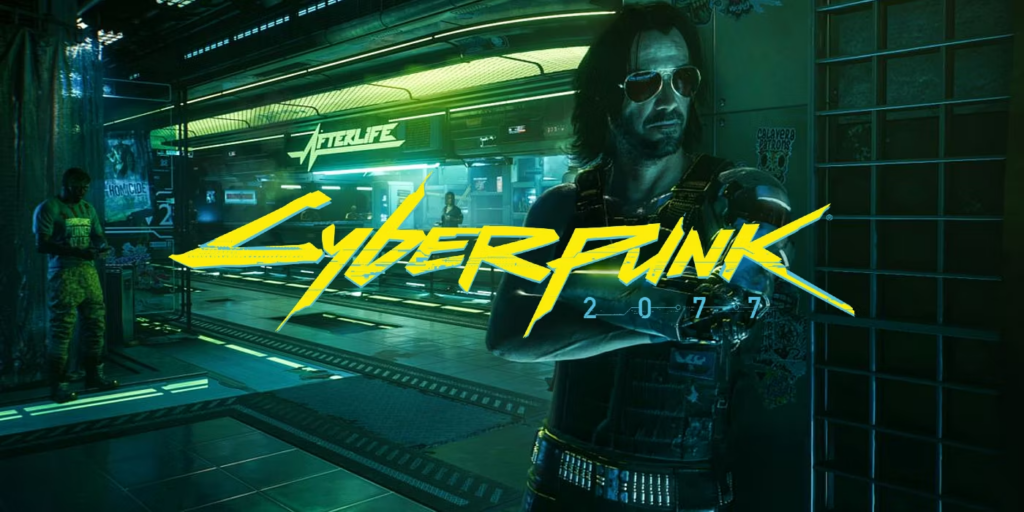
Cyberpunk 2077 by CD Projekt Red is a prime example of a game that successfully utilized press and media relations in its marketing strategy. Leading up to its release, the game gained massive media attention through well-crafted press releases, exclusive interviews, and partnerships with major gaming publications like IGN and GameSpot.
CD Projekt Red strategically released key information and developer insights, ensuring widespread coverage and keeping the game in the spotlight. They also maximized visibility by showcasing the game at major events like E3 (R.I.P) and Gamescom (we are at Gamescom every year, check our review here and come see us at our booth!), further building anticipation through extensive media coverage. This approach made Cyberpunk 2077 one of the most talked-about games before its launch.
Events and conventions
Participating in gaming events and conventions offers another opportunity to showcase your game to a wider audience. Plan ahead to ensure your presence will be noted. To maximize your exposure at these events, you can create eye-catching displays, offer engaging demos, and interact with attendees through interactive activities.
The goal here is to stand out and attract more visitors to your booth. Additionally, follow up with contacts made at events to build your relationship network and maintain momentum. We have covered many events int eh last year alone, check out out reviews of MIGS, Big House and Gamescom 2023.

Participating in conventions lets you meet creators, potential players, media, and industry professionals face-to-face. You can receive direct feedback from attendees, helping you understand what players like most about your game.
Events like MIGS, Big House, or Gamescom greatly increase your game’s visibility and exposure. For indie developers, it’s an opportunity to showcase your passion and build your local player base.
7. Keeping your Audience Engaged
You converted your target audience into players, but it is not over just yet. If you are looking for long-term success, you need to build a strong community around your game. By engaging with your audience through different channels, such as dedicated forums, social media groups, and events, you create a space where players can connect, share their experiences, and discuss your game.
Encouraging player feedback and involving your community in the development process is crucial. When players feel that their opinions matter and can directly influence the game’s direction, they become more invested in its success.
This feedback loop improves your game’s quality and strengthens the bond between you and your players. Players who feel heard and appreciated are more likely to stay engaged with your game. They are also more likely to advocate for it within their circles.
A strong community also amplifies your game’s visibility. When players discuss your game in forums, share it on social media, or participate in community events, they generate organic buzz that attracts new players. This word-of-mouth promotion is invaluable, as it comes from a place of genuine enthusiasm and trust. As your community grows, so does your game’s reach, leading to greater awareness and potentially higher sales.
Engage your audience
You have figured out your players and are starting to interact with them. Now armed with the insights of your target audience, you are able to create personalized marketing messages that resonate deeply with your players’ interests and needs based on the segmented personas you established.
Highlight aspects of your game that align with their preferences. For example, if your research indicates that your audience values social interaction, focus on the multiplayer features and community events of your game in your messaging. You can also utilize social media, forums, and in-game surveys to collect their opinions and suggestions.
Engagement is a two-way street, so foster a dialogue with your players by actively seeking and responding to their feedback. Additionally, Show them that their input matters by addressing their concerns and implementing their ideas when feasible. By doing it, you can improve your game and build a loyal and invested community around it.
Interactive content and community involvement
Minecraft, developed by Mojang Studios in 2009, has continuously evolved over the years by notably incorporating player feedback through various channels such as forums, social media, and official feedback mechanisms. The developers regularly release snapshots and beta versions, encouraging players to test new features and provide feedback before official updates.
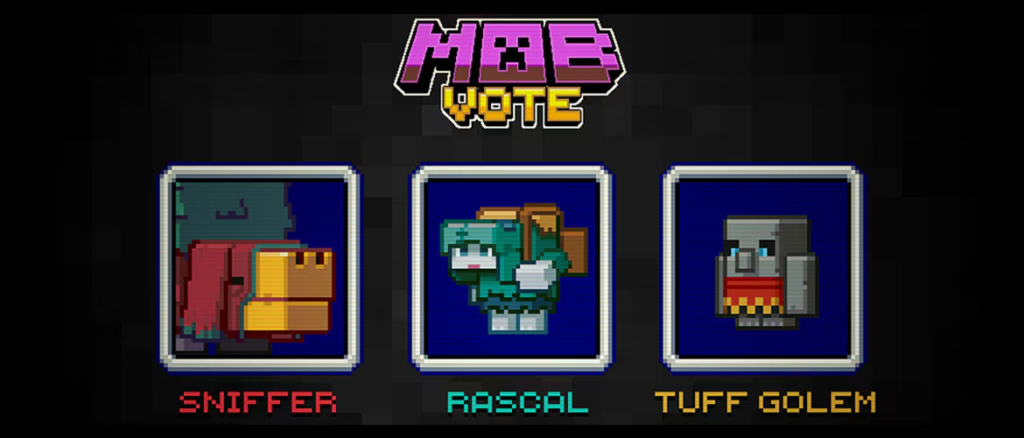
The “Minecraft Mob Vote” is a yearly survey where players vote for new mobs to add to the game. This event happens during Minecraft Live, Mojang Studios’ annual update and news event.
While not the only standout feature, it keeps Minecraft relevant and beloved by players. By engaging with players, developers create games that meet and exceed expectations, building a dedicated community.
IV. Putting Theory into Practice: Applying Your Marketing Strategy
Now that we’ve explored the various components of a successful game marketing strategy, it’s time to put theory into practice. In this final section, we’ll show you how to apply these insights to build a cohesive, impactful marketing plan.
Whether you’re launching a game, boosting retention, or expanding your audience, strategic implementation is key. Combining the right channels, messaging, and timing will maximize your game’s visibility, engagement, and success.
1. Select your Channels
You need to start by establishing all the right channels for each phase of the project in order to maximize your game’s impact and reach your target audience effectively. From pre-launch buzz to post-launch engagement, each channel offers unique advantages that can help propel your game to success.
The following table outlines the most effective marketing channels for different stages of your campaign:
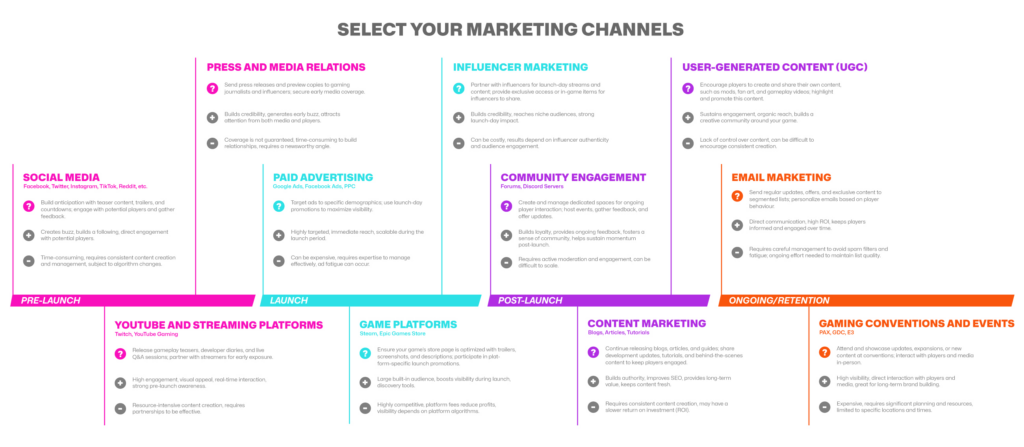
2. Game Marketing Campaign Timeline
Once you’ve determined where to focus your attention for each phase, you can retroactively plan your marketing timeline. Start by outlining key activities for each stage of your game’s promotion.
Pre-launch should focus on building buzz with trailers, screenshots, and developer insights. On launch day, maximize visibility with a coordinated content release and social media blitz, pushing ads across targeted platforms. Post-launch, keep momentum with updates, community engagement, and ongoing support.
Create a timeline with actions like crafting promotional content, contacting influencers and journalists, and launching milestone-based campaigns. Setting deadlines ensures your promotion stays on track and maximizes impact. In summary, you need to:

Running pre-launch campaigns
Pre-launch campaigns are probably the most important phase of your campaign and the perfect opportunity to harness the excitement of a new release. To capitalize on that excitement, offer sneak peeks, beta tests, and exclusive in-game content to early followers!
Valve’s recent update to Steam’s demo feature is another way to improve your game marketing. The update allows demos to have their own Steam page, notify users about the demo launch, and potentially feature on the “New & Trending” list, significantly increasing visibility and engagement.
In the article What Steam’s Big Demo Update Means for Your Marketing Strategy, Zukalous highlights the importance of careful planning, festival participation, and streamer engagement in prelaunch campaigns, using the game CleanFall as a case study to demonstrate the potential traffic and wishlist gains from an effective demo launch.

Therefore, by encouraging early purchases, countdowns, and teaser releases, you can build anticipation and generate buzz, especially on social media. Any interaction you stimulate before your release helps to create a community of eager players ready to jump in on day one!
Offering exclusive content and incentives to early adopters
Everyone loves to feel special, and exclusive content can make your early adopters feel valued. Offer special editions, in-game bonuses, or other unique incentives to encourage early purchases. These early adopters not only boost your initial sales but also become advocates for your game, spreading the word within their communities and once again providing another opportunity to grow your audience of players.
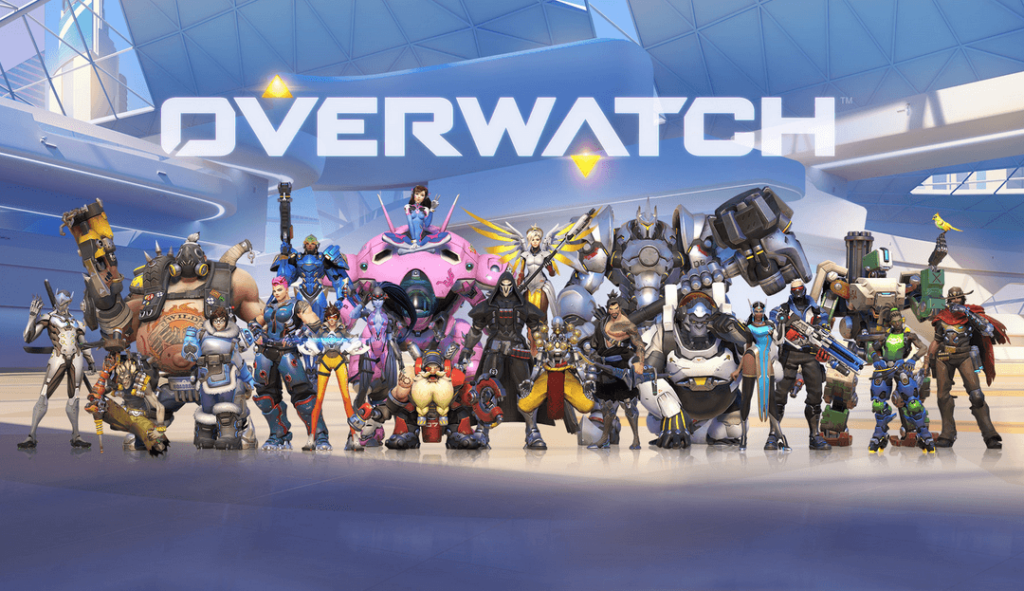
An example is the launch of Overwatch by Blizzard Entertainment. Early adopters who pre-ordered Overwatch received exclusive items, like character skins, only available before release. They also gained access to the closed beta, allowing them to play early and provide valuable feedback.
These incentives created a strong community and excitement, contributing to Overwatch’s successful launch and loyal player base. Early access and exclusive rewards encouraged players to share their excitement, effectively spreading the word.
V. Ready? Set, Go!
As an indie game studio, you possess the creativity and passion to create incredible gaming experiences. Promotion might seem daunting, especially with limited budgets and resources, but success is within reach.
The strategies outlined in this guide are designed to be actionable and adaptable, regardless of your experience level or financial constraints. Remember, the key is consistency, engagement, and a deep understanding of your audience. By taking proactive steps and applying these techniques, you can elevate your game’s visibility and achieve your promotional goals.
Now it is time to put these strategies into action. Does promotion still feel daunting? Do you want to have your own thorough market analysis to position your game effectively? Want to know more about your competition? Do you feel you are still missing something but can’t put your finger on it? Fear not! We are here to help you.
At GameRebellion, we strive to help studios accomplish their goals and make sure your game gets the best chances when it hits the market. Get our Game Market Analysis to maximize your game’s reach potential!

Your journey to successful game promotion starts now—embrace it and make your game shine.

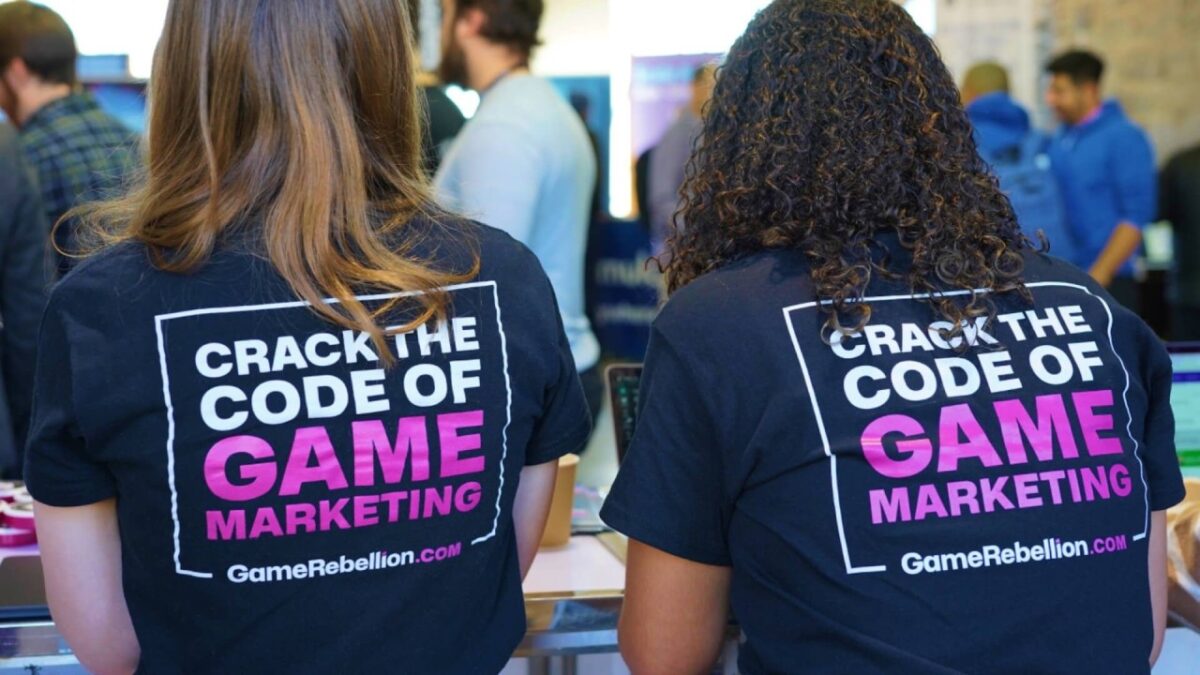
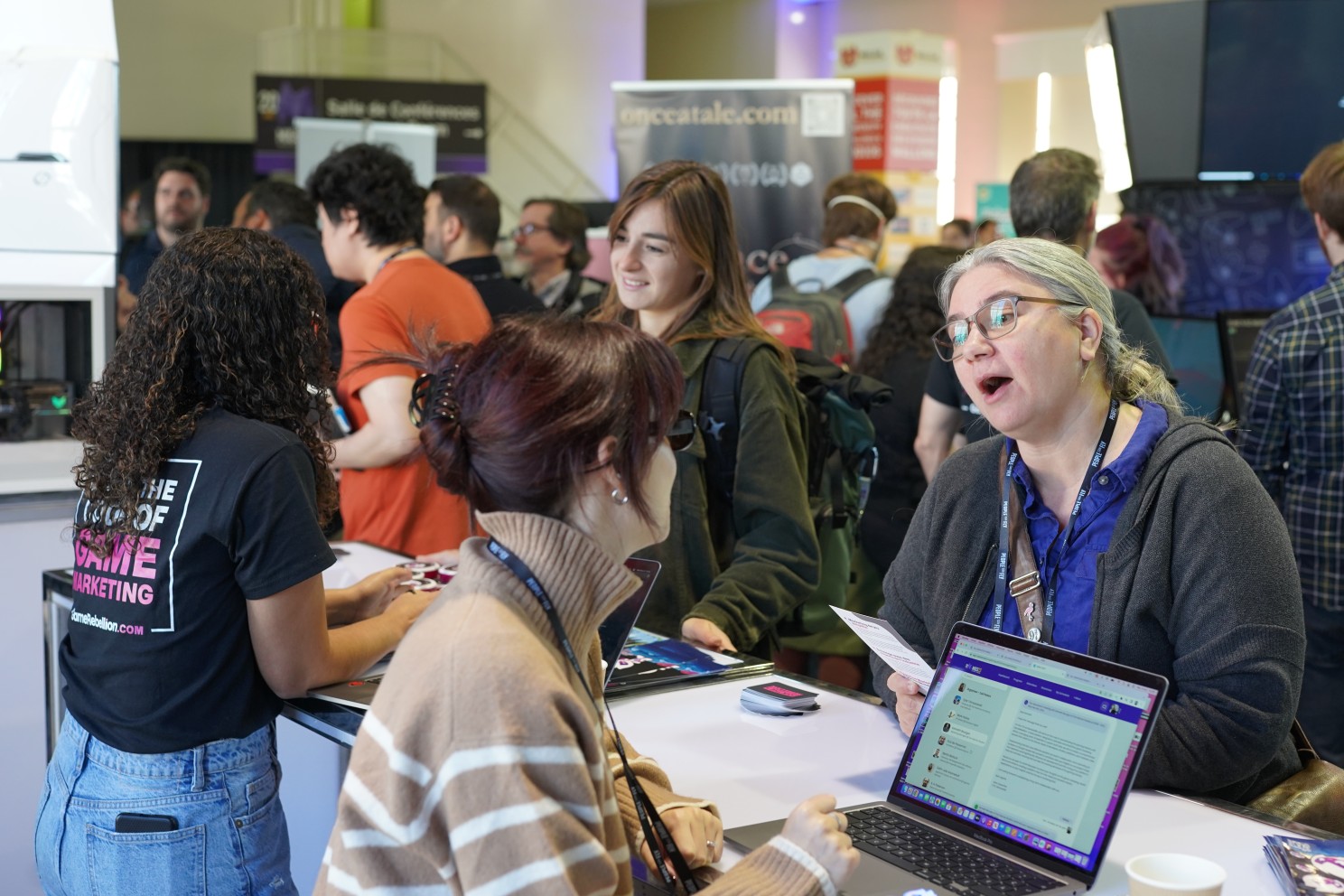

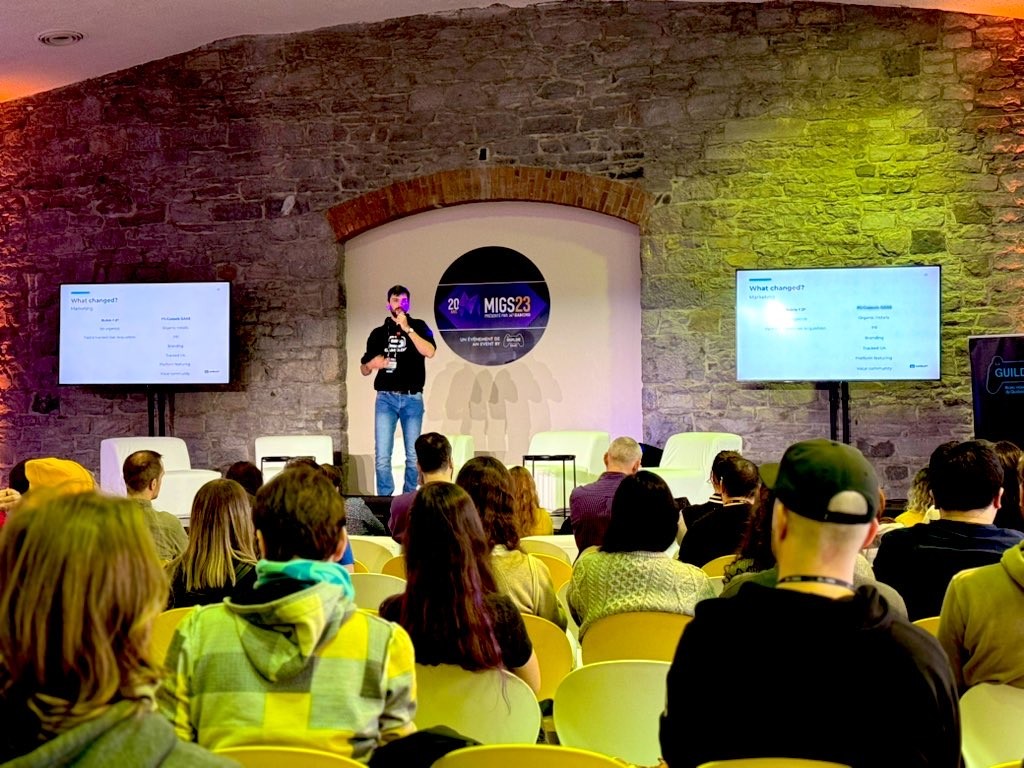

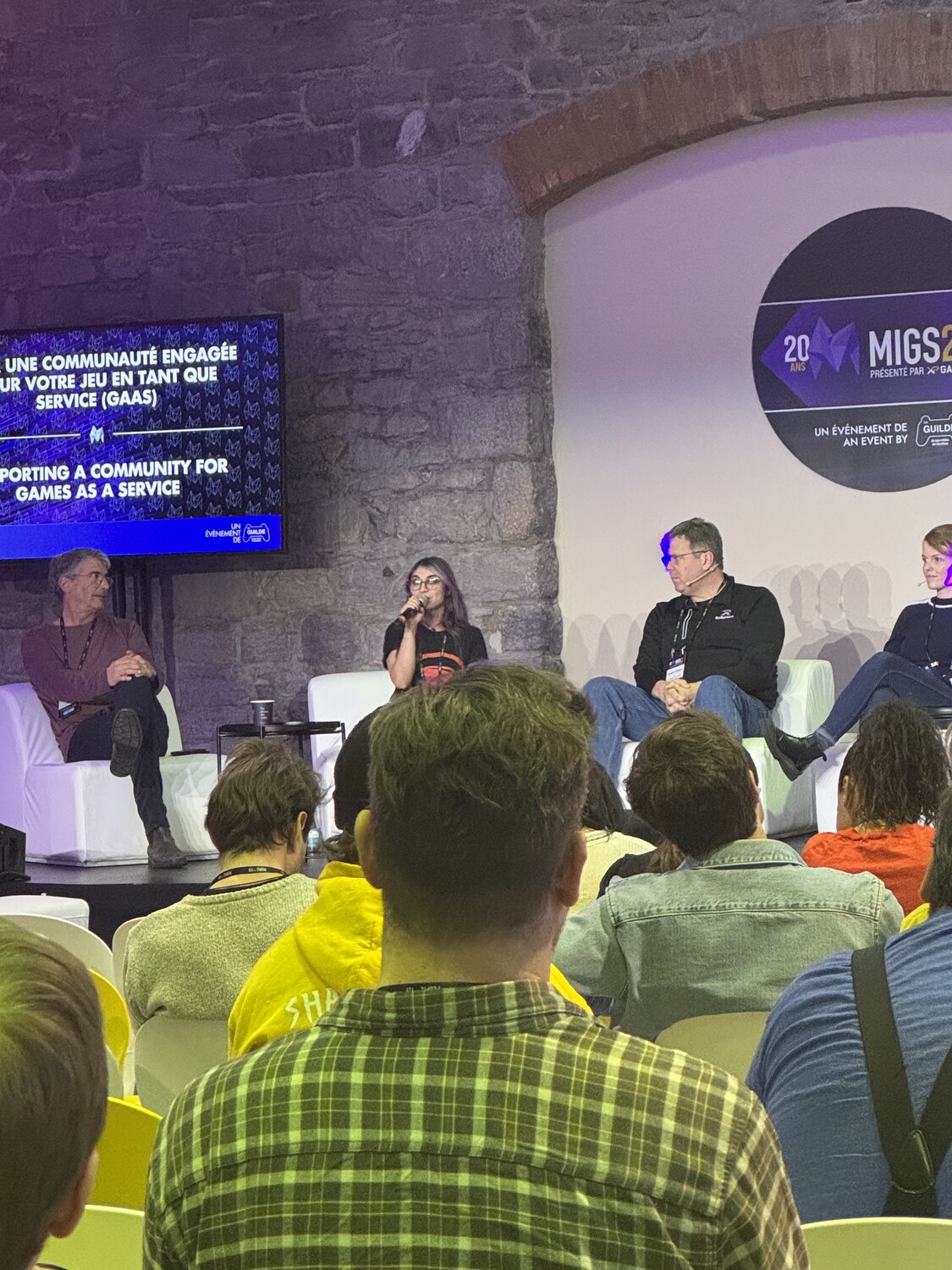
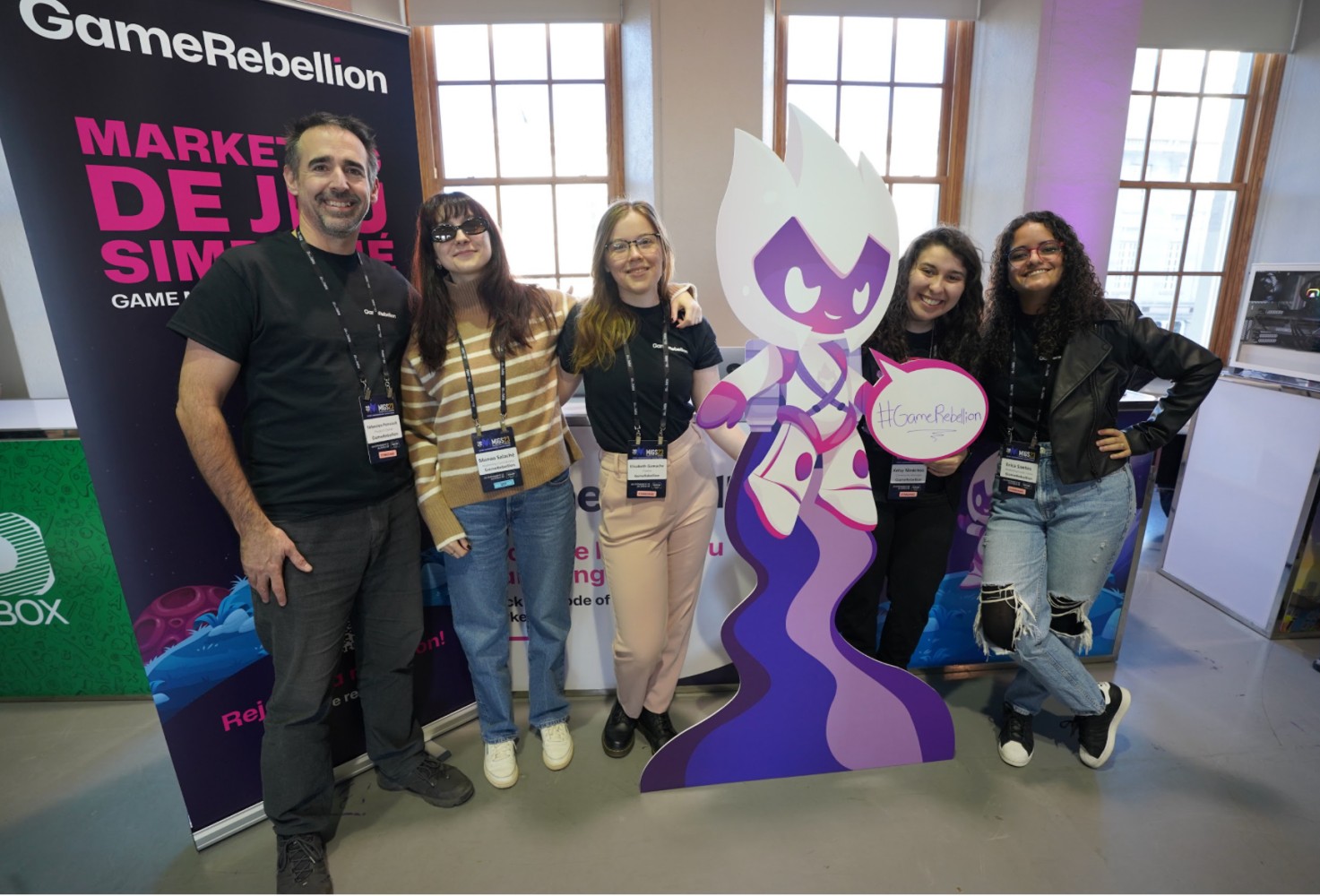
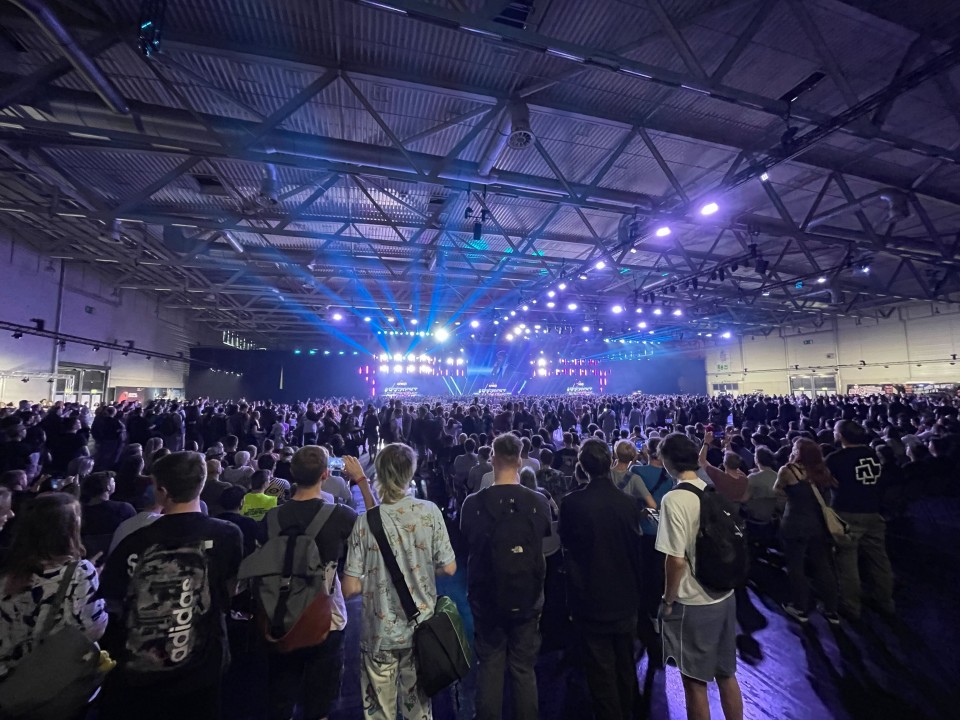

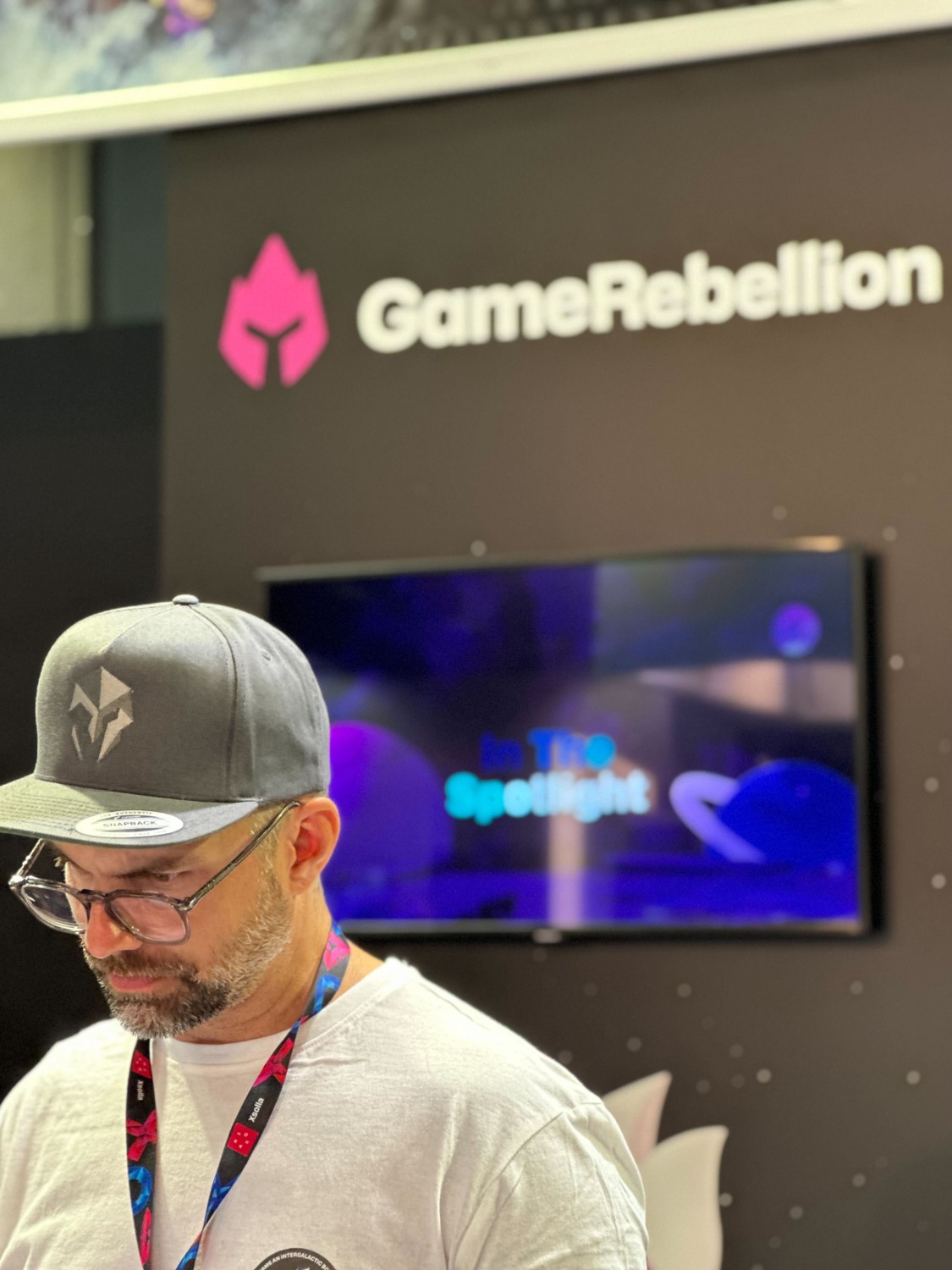

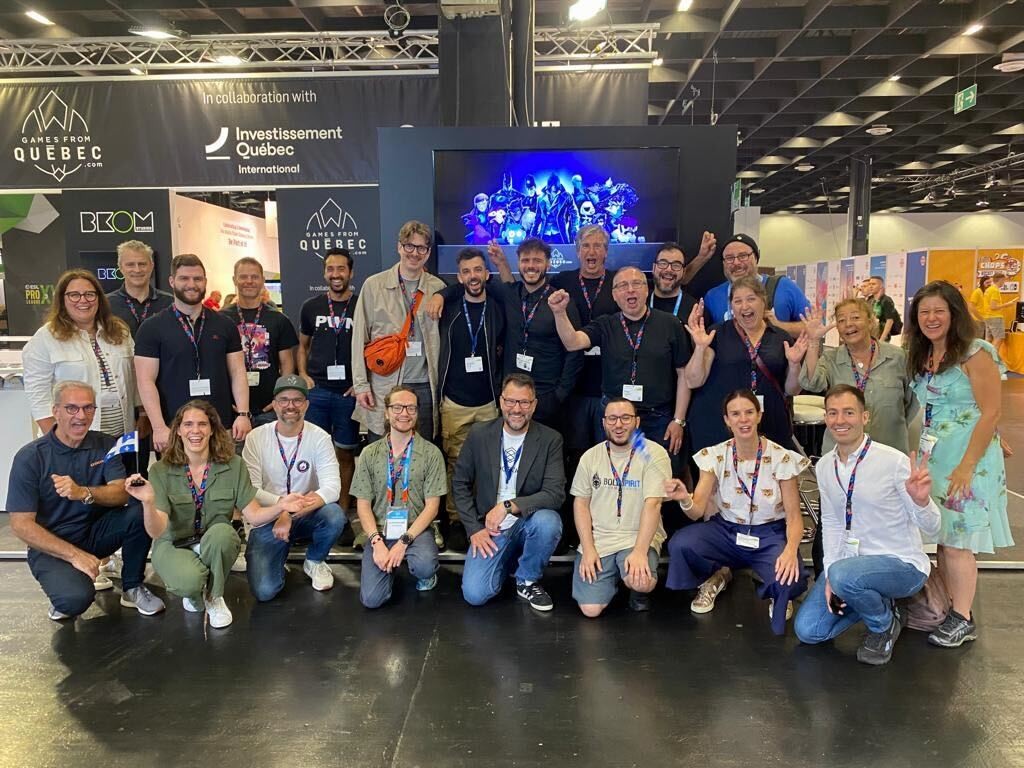




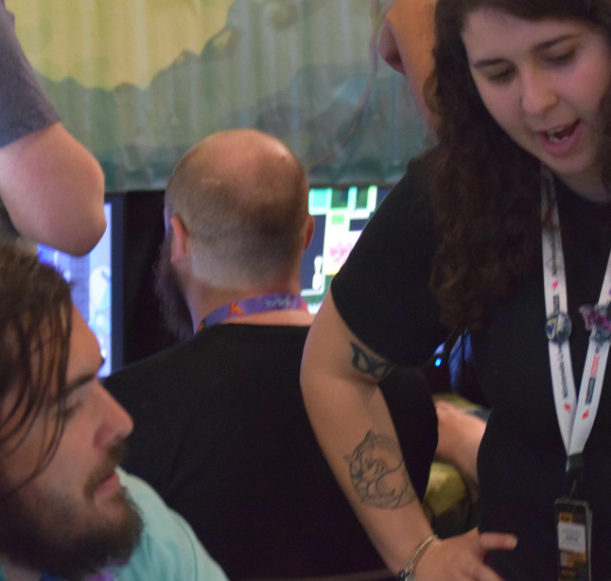
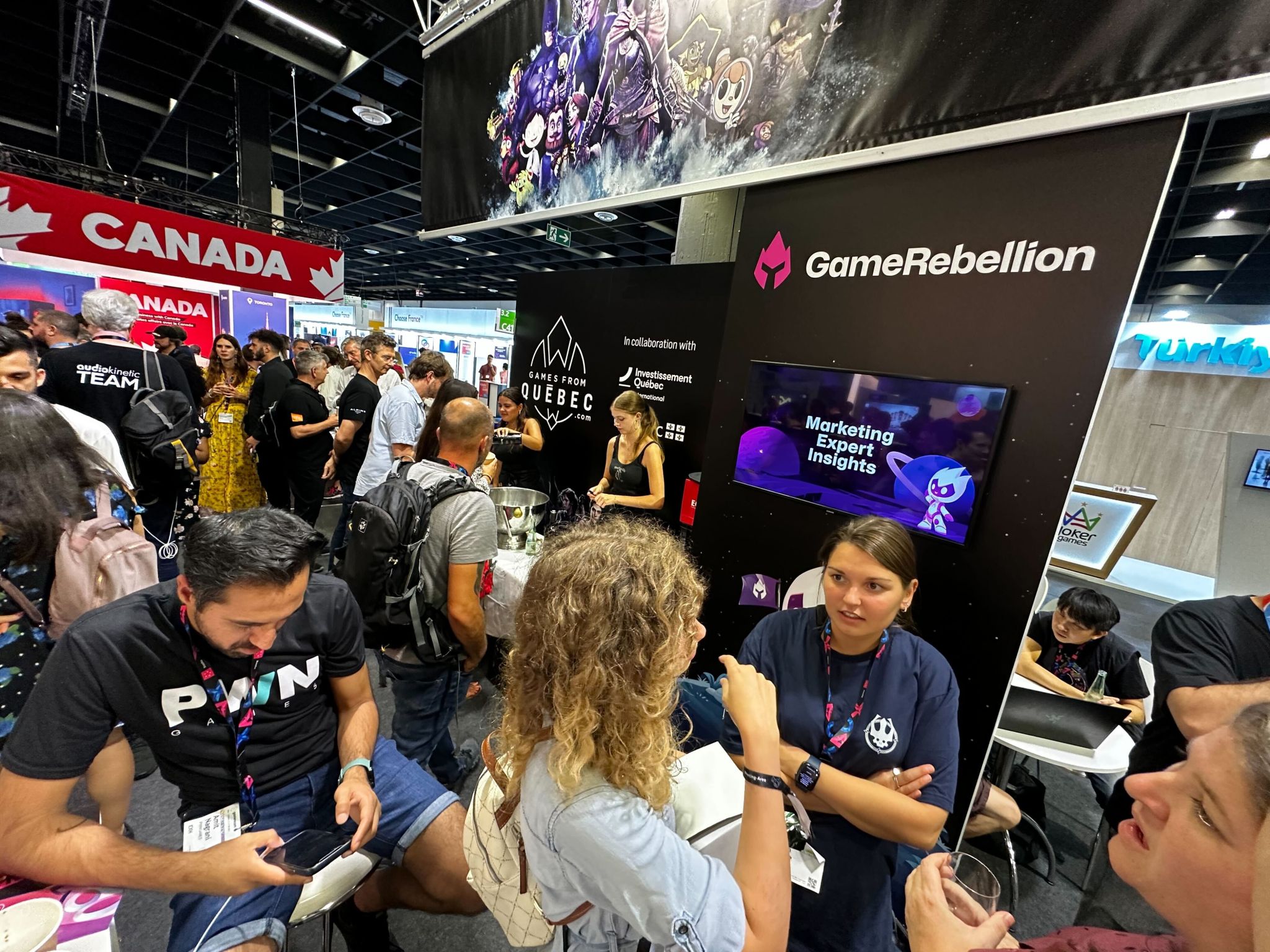
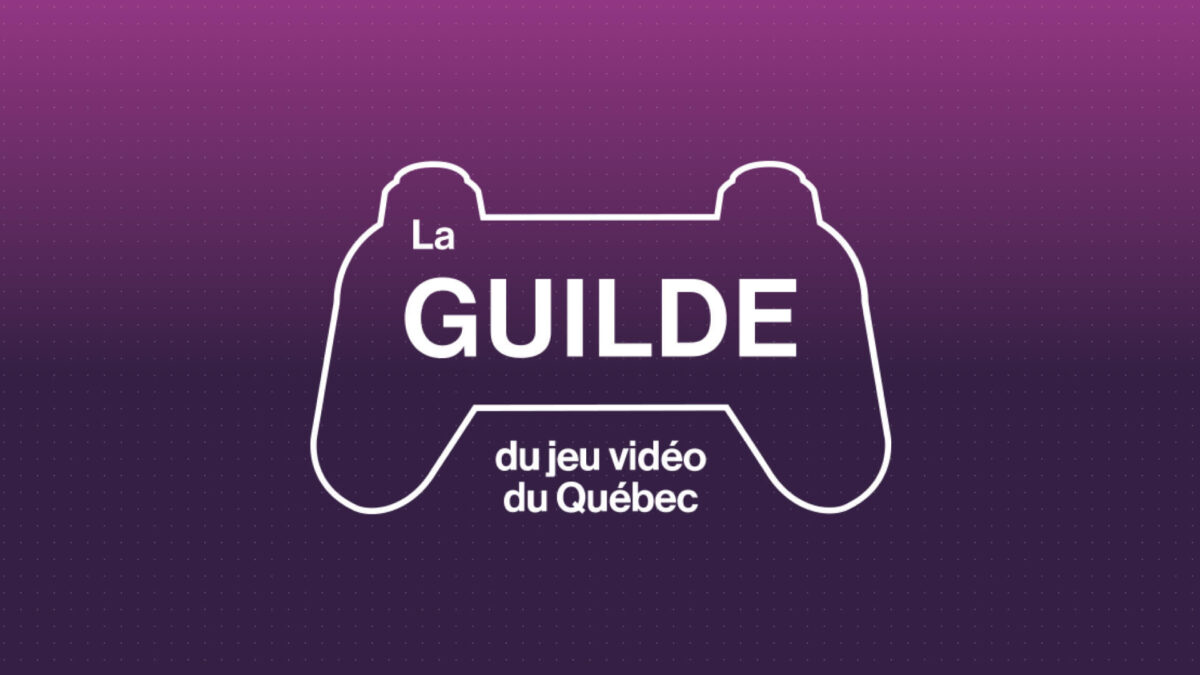
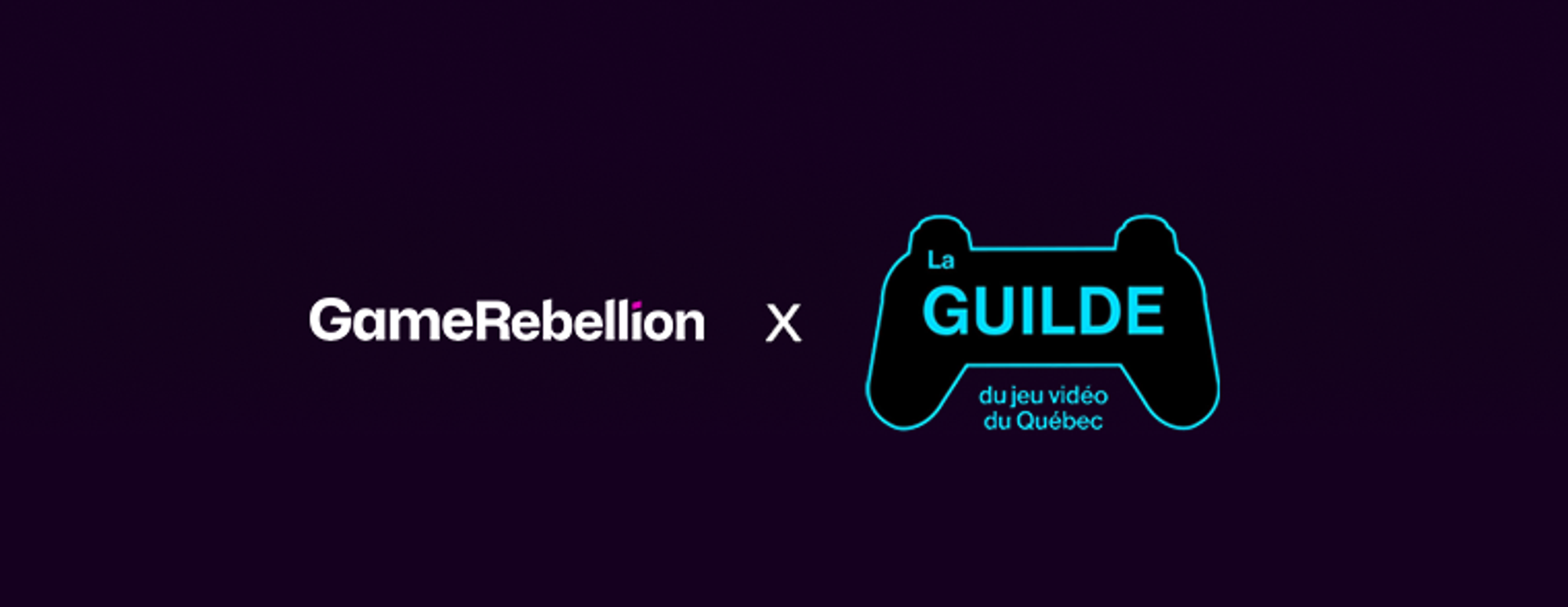
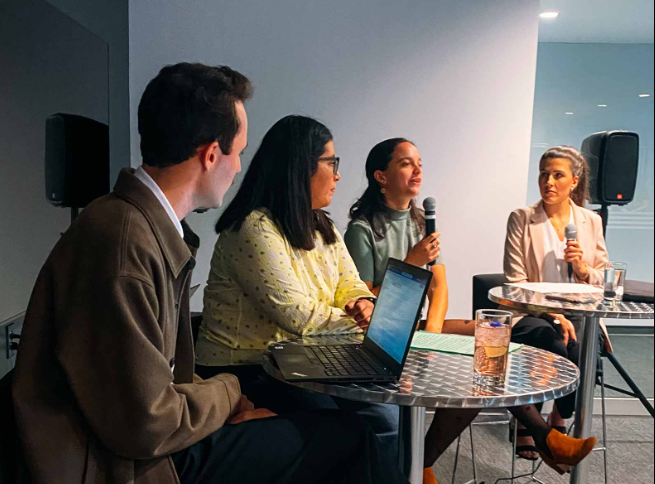 La Guilde du Jeu Vidéo Seminar – Practices in Diversity, Equity and Inclusion adapted to the video game industry 📸:
La Guilde du Jeu Vidéo Seminar – Practices in Diversity, Equity and Inclusion adapted to the video game industry 📸:  La Guilde du Jeu Vidéo du Québec’s Organized Québec Representative Booths at the
La Guilde du Jeu Vidéo du Québec’s Organized Québec Representative Booths at the 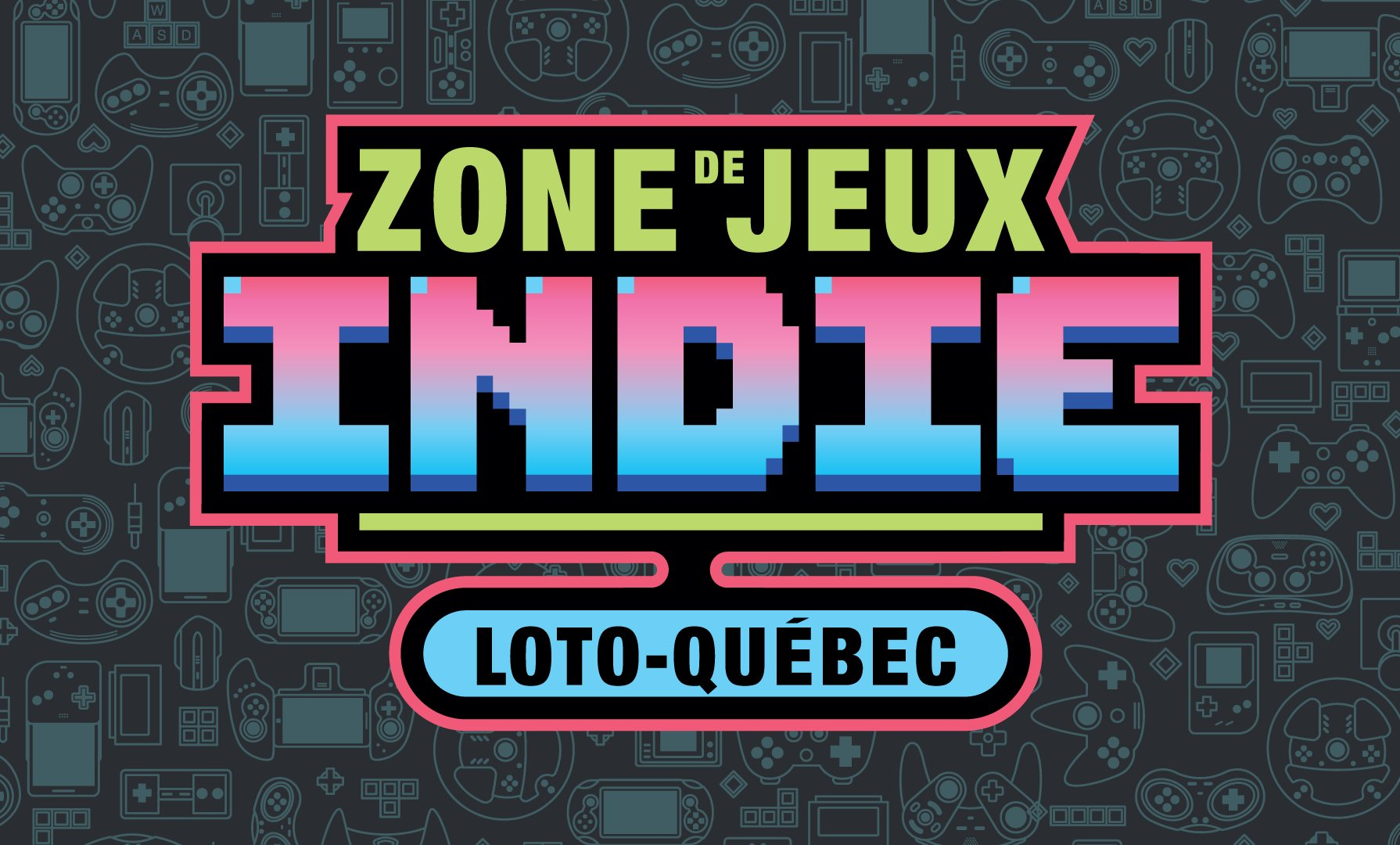 Zone de Jeux Indie – Espace de partenariat avec Loto-Québec dédié aux sorties des studios indépendants à venir, présenté au public lors des conventions annuelles à travers le Québec, telles que Comiccon et Megamigs.
Zone de Jeux Indie – Espace de partenariat avec Loto-Québec dédié aux sorties des studios indépendants à venir, présenté au public lors des conventions annuelles à travers le Québec, telles que Comiccon et Megamigs.

